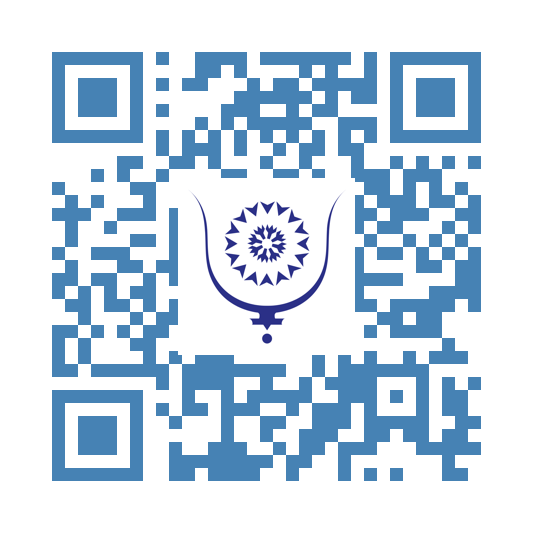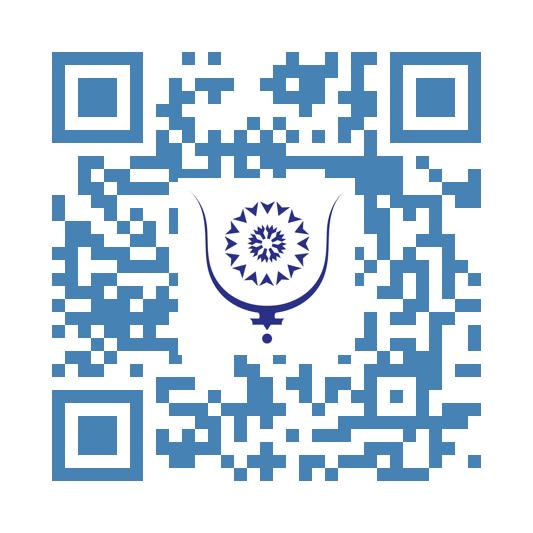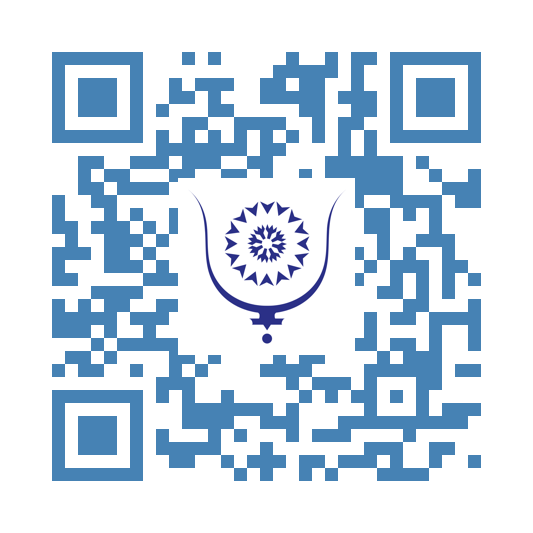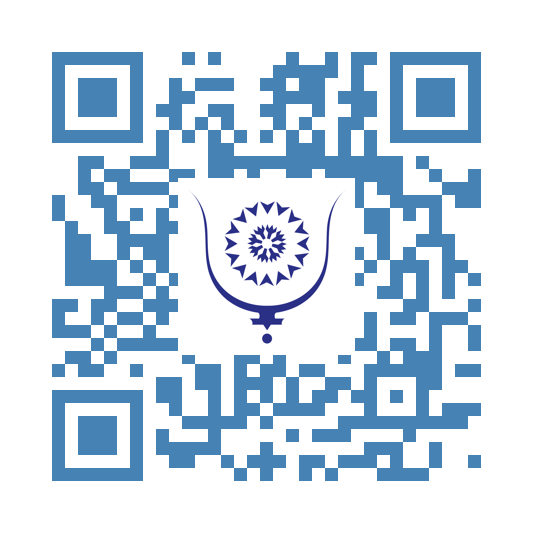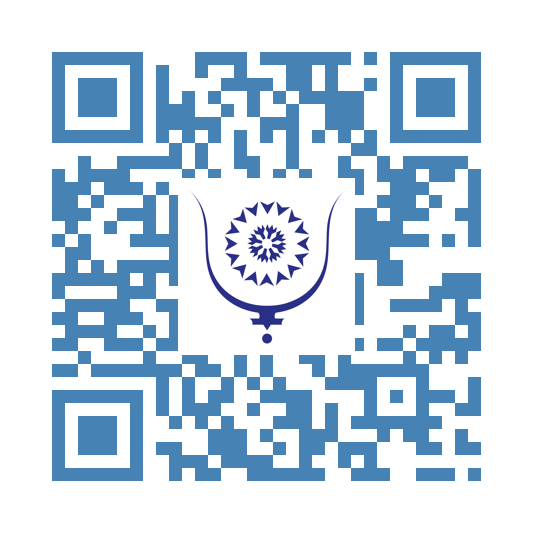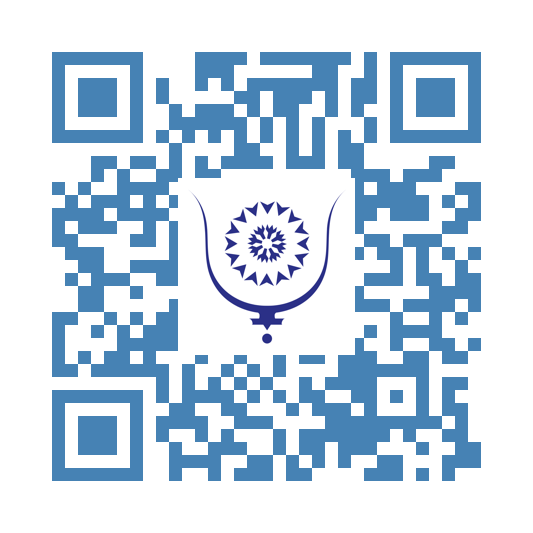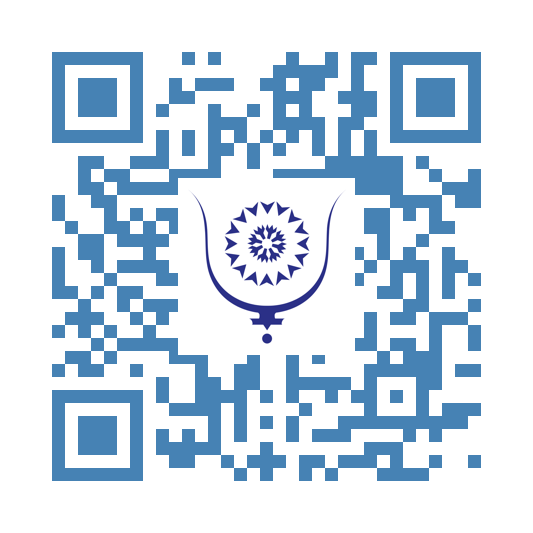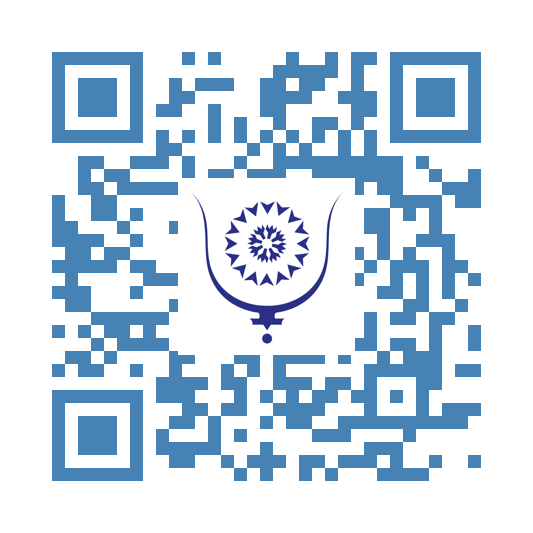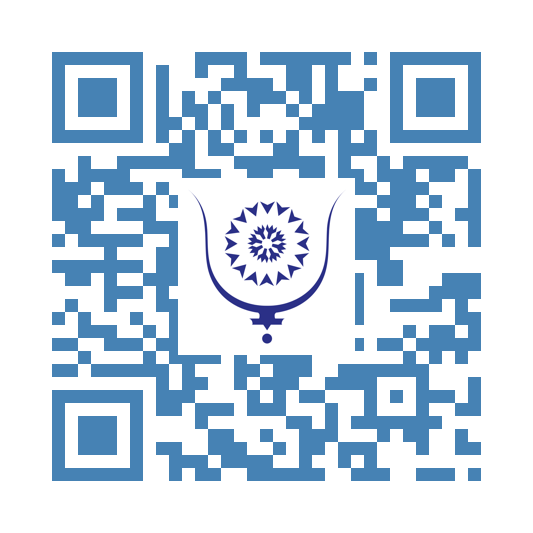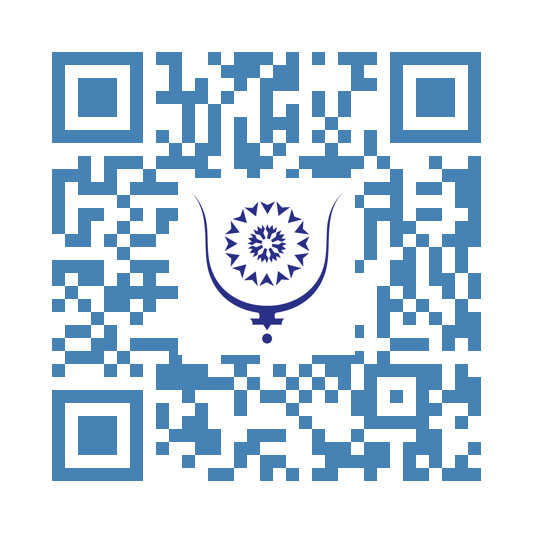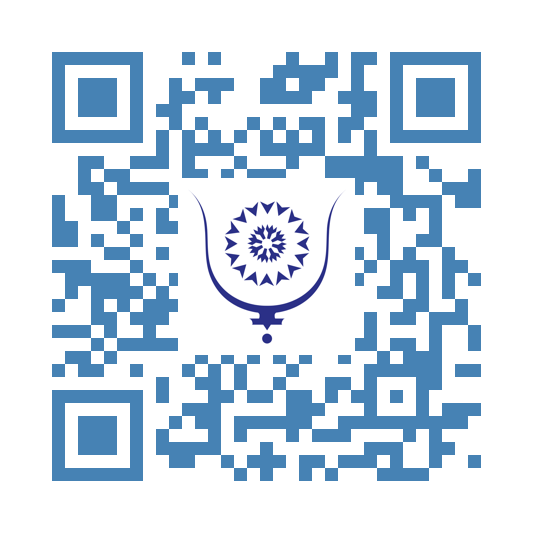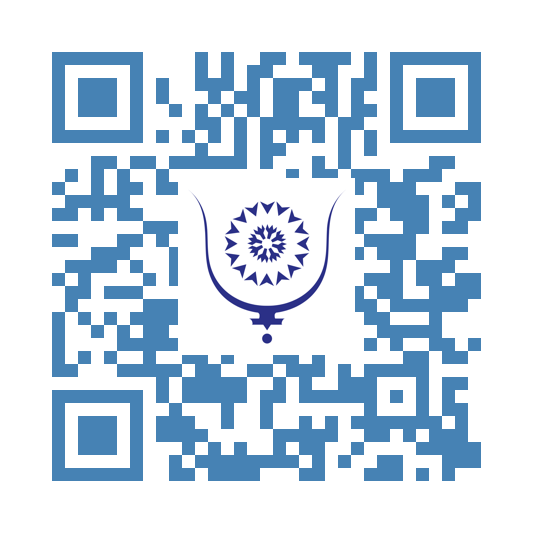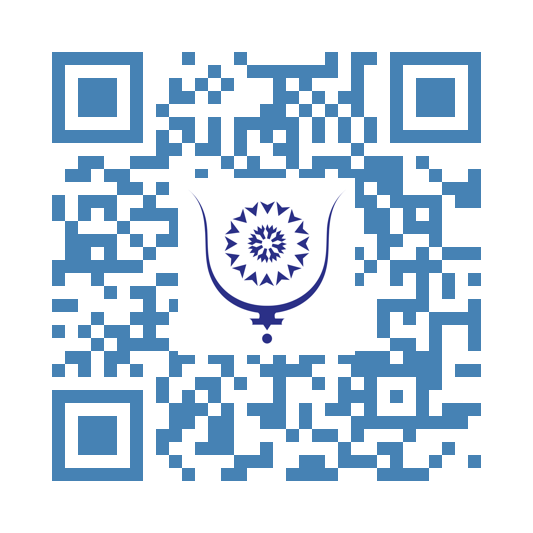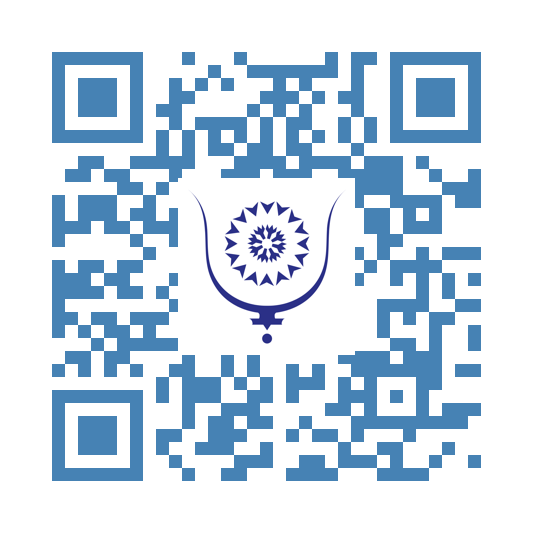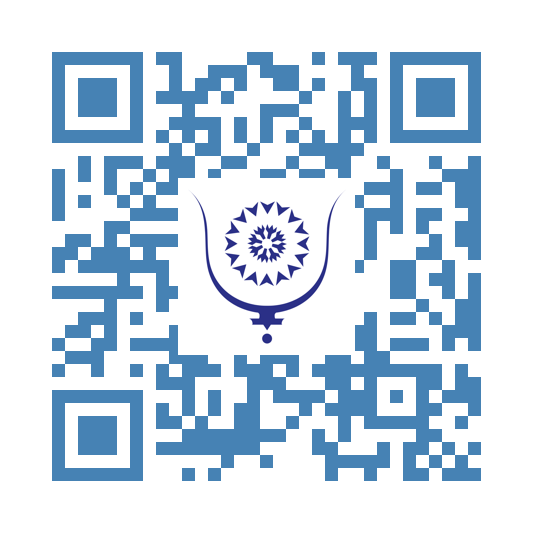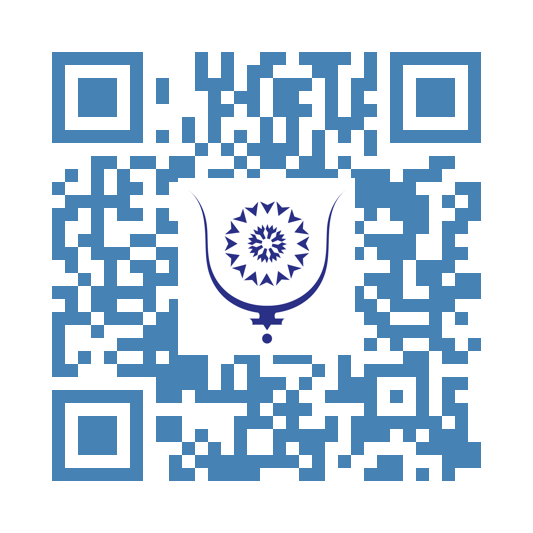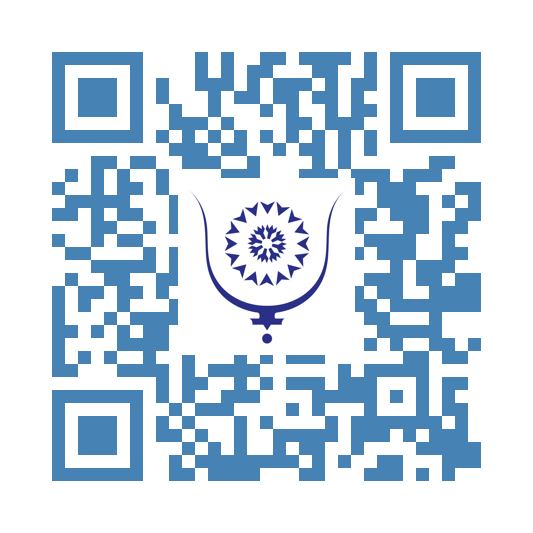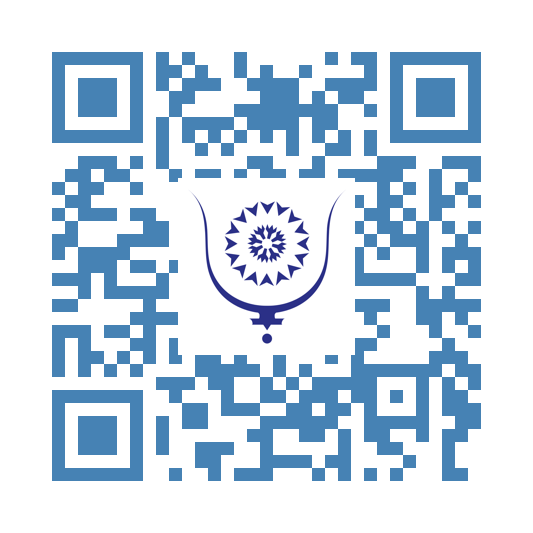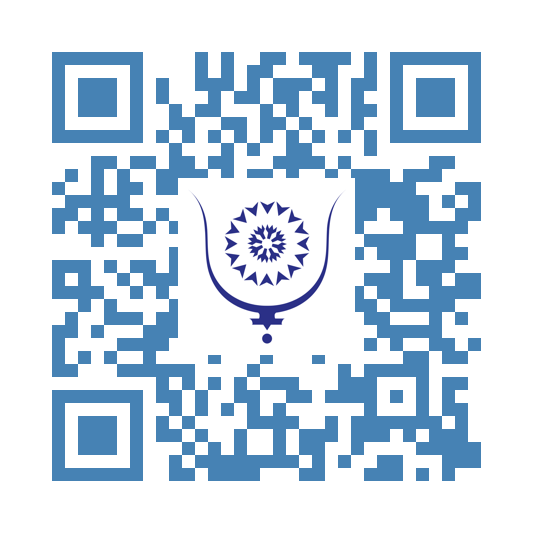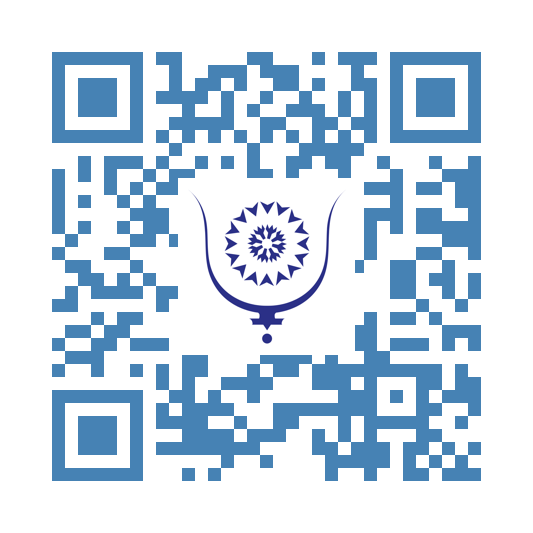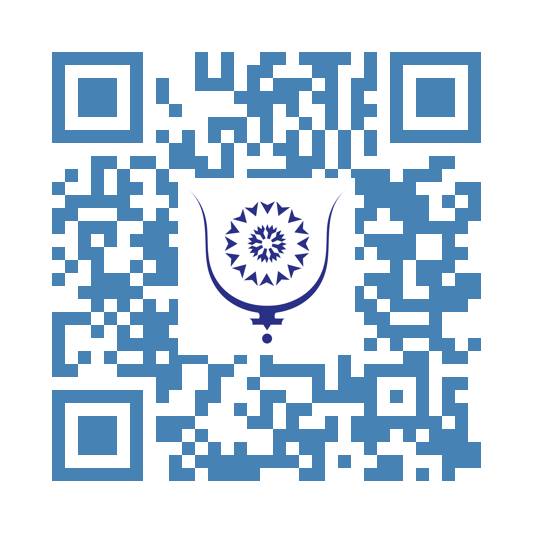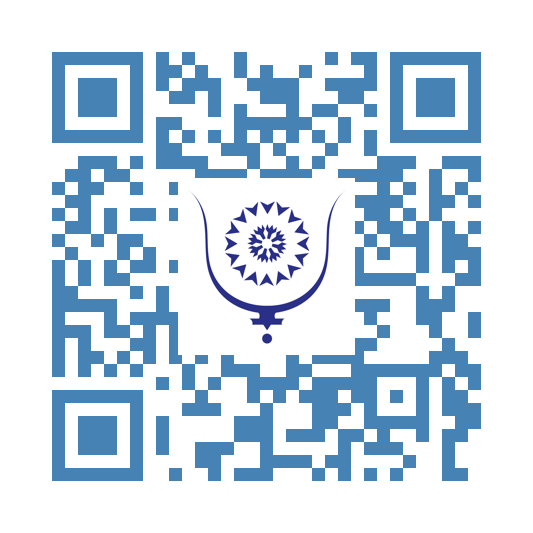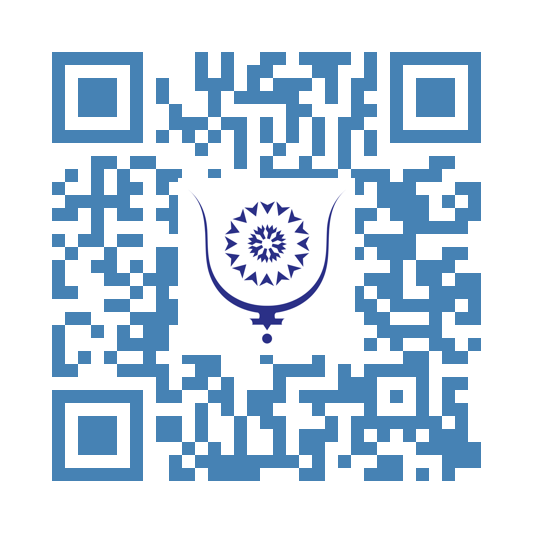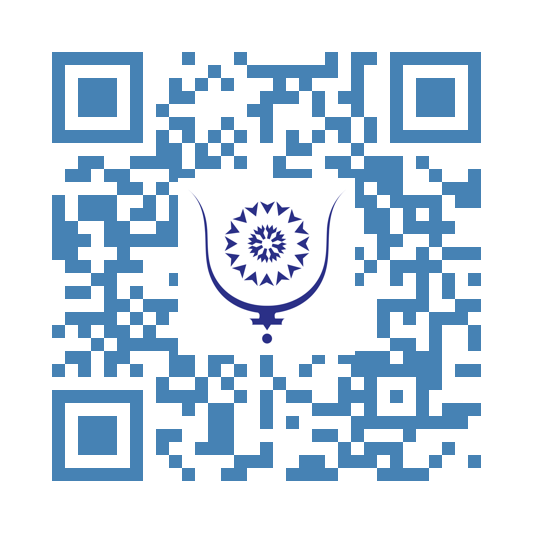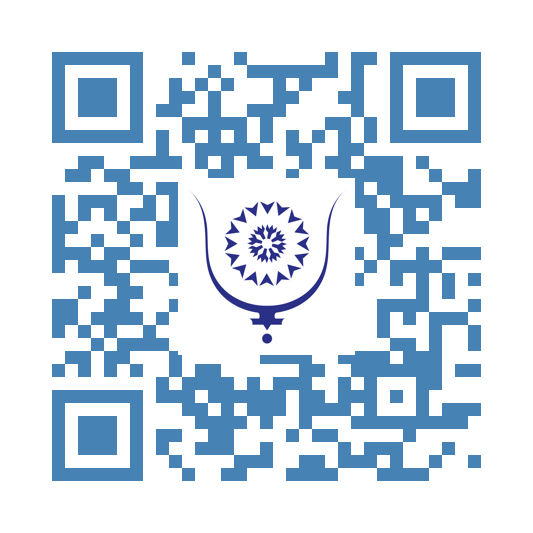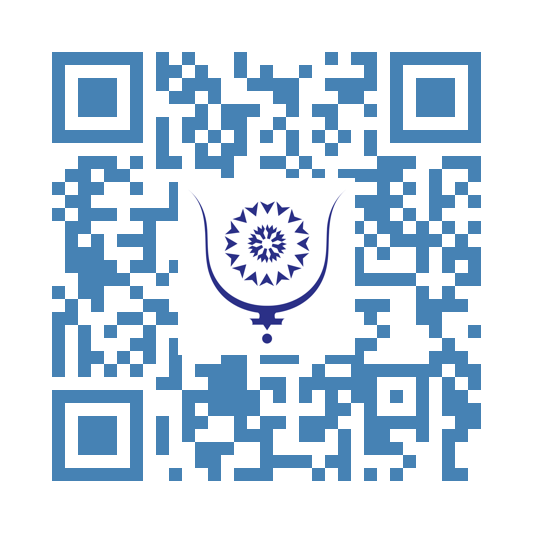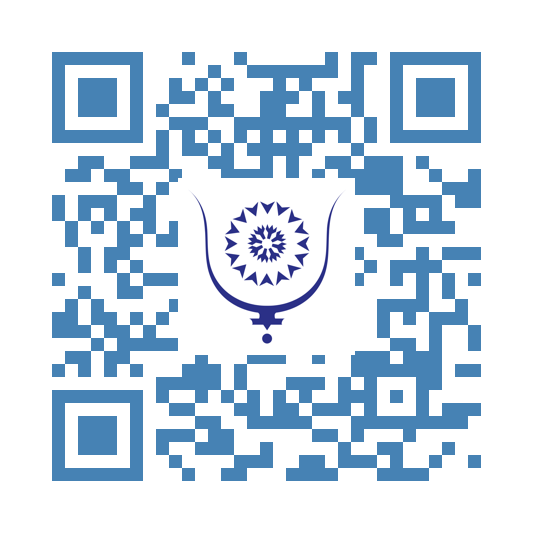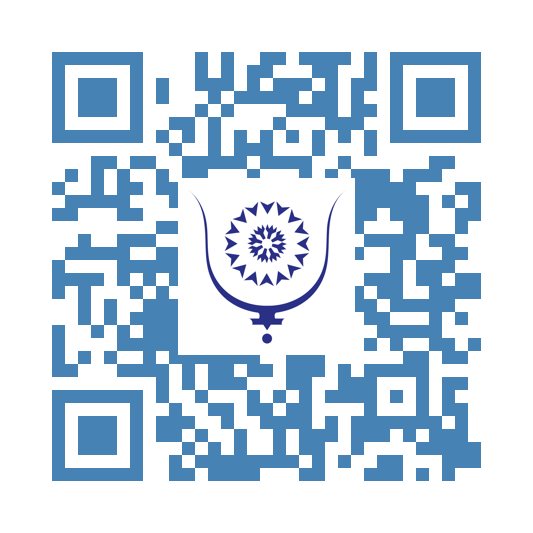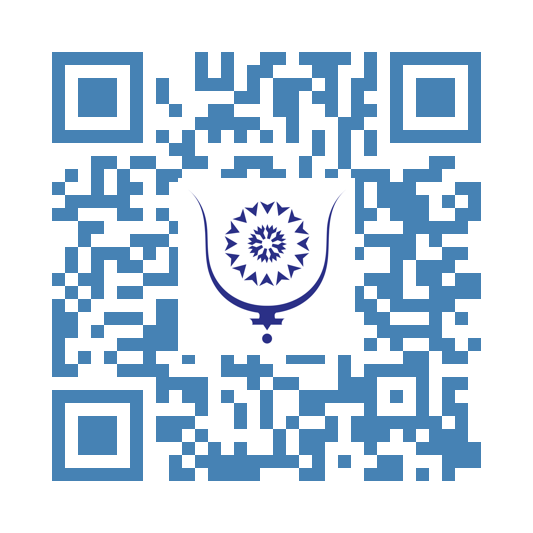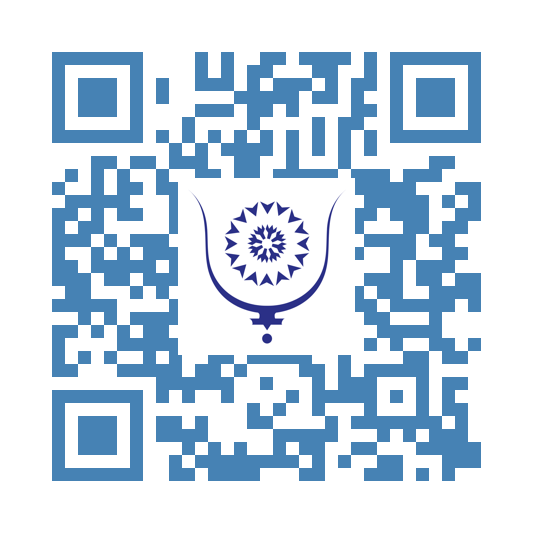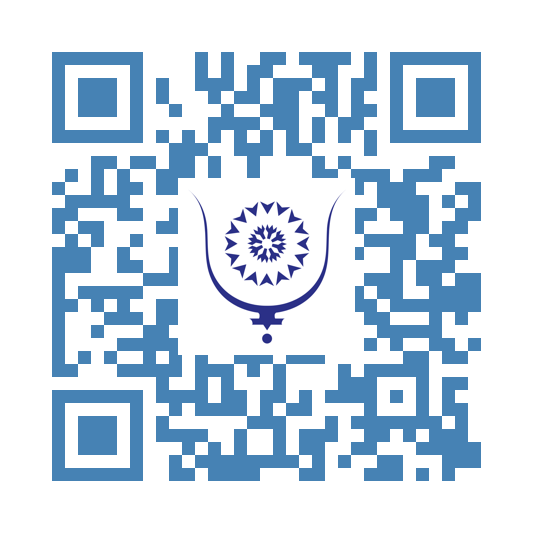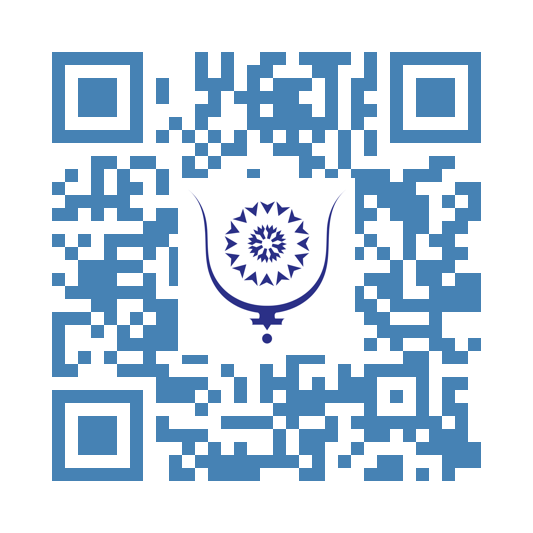Human Writing VS AI Writing
3459
Generative AI is killing the writing market nowadays. Is there still a purpose to writing articles or books as a passion, considering writing is a means of self-expression?
The value of writing seems to be diminishing drastically, with many people misusing AI by copying content from tools like ChatGPT and pasting it without even reading it.
When someone writes from their heart and mind, expressing genuine human emotions, their work often goes unnoticed, dismissed as AI-generated.
Personally, I believe writing has become exceedingly competitive. It's becoming challenging to achieve bestseller status if you haven't published before the rise of AI, unless you're already well-known in your field.
This is precisely how ChatGPT and similar technologies are disrupting the market for new writers.
Note: This text was not generated by AI.
Share:
Human Writing VS AI Writing
copy:
https://bluwr.com/p/10659230
Rethinking Productivity in PhD Studies for Better Results
3482
In the world of PhD studies, there's a common belief that spending long hours in the office means you're doing well. However, this isn't always the best approach. Being in the office is important for working together with your team, sharing ideas, and learning from each other. But, it shouldn't become a routine where you're just sitting at your desk without really being productive.
It's better to focus on what you actually achieve rather than how many hours you're seen at your workspace. Some students find they work best in quiet, solo environments where they can really focus. Recognizing this, students and their advisors should talk about finding the right balance. It's okay to work from different places if that helps you do your best work.
Here are some tips for students and academic departments to consider:
- Find the right mix of office time and working alone: It's good to be in the office for team work and discussions, but also find time and places where you can concentrate deeply on your own work.
- Set clear goals: Focus on what you want to achieve with your research, rather than how long you spend working on it. This helps you stay on track and makes your work more meaningful.
- Talk about your work style: Be open with your team and supervisor about how and where you work best. This can lead to a more supportive environment where everyone's working habits are respected.
- Keep a balanced routine: Make sure to take breaks, get some exercise, and enjoy hobbies outside of your studies. A balanced life supports your mental health and can make you more productive.
- Use technology to stay connected: Even when you're not in the office, you can keep in touch with your team through email, discord, video calls, and other online tools. This helps you stay part of the team without needing to be physically present all the time.
Academic cultures should encourage students to work in ways that best suit them, focusing on achievements rather than just time spent in the office. This approach can lead to happier, more productive students and better research outcomes. Remember, it's about finding what works for you and making the most of it.
Share:
Rethinking Productivity in PhD Studies for Better Results
copy:
https://bluwr.com/p/10500535
PhD Balance Achieving Expertise and Broad Perspectives
3471
A PhD, or Doctor of Philosophy, isn't just about becoming a master in a specific field; it's essentially about learning to think deeply and critically about complex problems. Traditionally, getting a PhD meant more than just becoming an expert in a narrow area. It was about developing a keen ability to question the status quo and to see the connections between diverse areas of knowledge. However, today's PhD programs often lean heavily towards specialization, encouraging students to focus intensely on very specific topics and methods. While there's undeniable value in becoming an expert, this approach can sometimes overshadow the importance of the bigger picture. It's vital for PhD students to not only have a deep understanding of their specific area but also to have the capacity to think broadly about how their work fits into a wider context.
Encouraging PhD students to think both critically and broadly doesn’t detract from their specialization. Rather, it enriches their educational experience, making them not just specialists but also versatile thinkers who can approach problems from various angles. This mindset allows them to look beyond their immediate projects and data, considering the larger implications of their work. By finding the right balance between deep, specialized knowledge and a broad, critical mindset, PhD programs can better prepare students for a range of careers, both in and out of academia. This isn't about choosing between being an expert or a broad thinker; it's about being both.
Share:
PhD Balance Achieving Expertise and Broad Perspectives
copy:
https://bluwr.com/p/10319831
[Meditation #1 ] Wake up
3520
Close your eyes and endeavor to recall the first instance when you became self-aware, the initial moment you truly opened your eyes and observed the world around you. Can you locate this image within your memories? Is it vivid, or perhaps elusive? If you haven't found it, fret not, for it's often said that every story in existence has a beginning. Thus, you can believe that the genesis of your narrative exists, even if it's shrouded in the mists of forgetfulness. "Belief" can expedite the journey towards answers to myriad questions in your mind. However, "awareness" can lead you along alternative, albeit potentially longer, paths to deeper understanding. Are you inclined towards belief or awareness?
Now, open your eyes. What do you see before you? Can you touch, hear, or even smell it? How do you know of its existence? Do you rely on belief in your senses? If so, where does your awareness fit into this? Do you think belief precedes awareness? Do you think your story begins with believing in what you perceive?
**************************************************
*Close your eyes again and try to remember the best moment of your life so far. Do you find it? Can you see your smile? Can you feel your happiness again in this best moment? Keep your eyes closed and just focus, you can do it if you want. But did you ask yourself if you are happy now or not? Are you good? Be honest with yourself, you should know what happens inside you. There is a soul inside you. Did you ever ask your soul if it is good or not? You can be happy but your soul isn't, so you just claim happiness. Happiness is not just smiling and laughing is a deeper feeling that your soul is good.
I won't prompt you to open and close your eyes again to revisit the sad moments in your life. Do you know why? Because these memories should be expunged from your mind if you seek to nurture a wholesome soul and genuine happiness. Happiness is a choice, not a happenstance occurrence. Remember, you have the power to choose happiness. It hinges on how you perceive the events in your story. Focus on the filled portion of your glass, not the empty part, to uphold a good soul.
**************************************************
Just as every story boasts a beginning and middle, it inevitably culminates in an end. Have you ever pondered this inevitability? How do you envision the final chapter of your tale? Do you anticipate a denouement suffused with joy or tinged with sorrow? Do you expect to walk the final steps alone, or surrounded by companions? Are you apprehensive about your end? Be honest with yourself; you cannot control all the elements of your story. If you struggle to discern the beginning and end of your tale, it suggests that you're not the master of your narrative; rather, you are merely a character in a dream that will conclude when you hear "Wake up" from your master.
Share:
[Meditation #1 ] Wake up
copy:
https://bluwr.com/p/10216033
13th All Africa Games, athletics ends in apotheosis
3368
On the evening of 22nd March, the athletics events of the 13th edition of the All Africa Games came to an end in the same atmosphere and with the same enthusiasm of an overjoyed public, especially for the two victories of Ghana.
A historic moment for Ghana and African athletics.
51 of the 54 member countries and no fewer than 625 athletes took part in this edition, which was characterized by the quality of the organization, the high level of the track and equipment and, of course, the excellent preparation of the athletes, who set numerous records of the Games, national records and many of the World Lead performances, including that of Zambia in the men's 4x400m, which brought the competitions to a climax in this Final day of athletics at All-African Games.
Indeed, it saw Zambia clocking 2:59.12 a National and Games record with great anchor of Muzala Samokunga ahead of Botswana 2:59.32.
On the women side Nigeria clocked 3:27.29 in the same event.
There was also an interesting javelin improvement for Nigerian Nnadi Chinecherem to 82m80, a new national record over Kenyan star Julius Yego 81m74.
The Algerian Yaser Triki , world indoor silver in triple jump, was beaten in long jump with 7m83 (+2.9) to South African new comer Mthembu Asande 7m86 (+1.5).
Evans Yamooah from Ghana won men high jump 2m23, just 1 cm below national record.
In the 5000m, World medalist Ethiopian Hagos Gebrhiwot confirmed his status in the event with 13:38.12, the same for his compatriot Hirut Meshesha in women 1500 m who clocked 4:05.71 a new Games record over Hawi Abera 4:06.09 and third was Kenyan Mary Ekiru 4:06.22.
Kenya got gold in men 1500 m as Brian Komen won in 3:39.19 over Ermias Girma from Ethiopia with 3:39.40 and Abel Kipsang another Kenyan with 3:39.45.
Sprints over 200 m were against strong wind, home win, to the great pleasure of the crowd, for Joseph Amoah 20.70 (-2.8) and for Gina Bass from Gambia 23.13 (-2.6) for her second gold in the Games.
South African Rogail Joseph won women 400 m hurdles 55.39 in a Personal Best ahead of Moroccan Noura Ennadi 55.85.
In the Half marathon gold medals goes to Eritrea with Samson Amare Hailemicael in 65:04 and in the women race the victory went to South Sudan Loliha Atalena in 74:36.
At the end a total 27 countries are medal winners at this 13th All Africa Games athletics competitions, which is a little bit more than half number of participant countries (51).
Nigeria won the medal ranking with 11 gold, 6 silver and 4 bronze medals.
Ethiopia finished second: 7-7-4.
South Africa third: 7-1-3
Kenya 4th: 6-6-8
and Ghana 5th with 3 gold, 2 silver ans 1 bronze.
Share:
13th All Africa Games, athletics ends in apotheosis
copy:
https://bluwr.com/p/10169112
What Led to More Specialists Than Philosophers in Academia? A PhD Student’s Perspective
3251
A PhD, or Doctor of Philosophy, goes beyond just mastering a field — it’s about learning how to think deeply about complex issues. Traditionally, earning a PhD wasn’t only about becoming an expert in a narrow area. It was also about developing a strong ability to think critically, question the status quo, and understand how different areas of knowledge connect.
However, many PhD programs today focus heavily on specialization, pushing students to concentrate on very specific topics and techniques. While being an expert is certainly important, this approach can sometimes overshadow the bigger picture. It’s essential for PhD students not just to know a lot about a little but also to be able to think broadly about how their work fits into the world.
Encouraging students to think critically and broadly doesn’t mean we’re asking them to know less about their specialty. Instead, it’s about enriching their experience, making them not only specialists but also thinkers who can approach problems from various angles. This approach helps them see beyond their experiments and data, to the larger impact of their work.
By finding a balance between deep, specialized knowledge and a broad, critical mindset, PhD programs can prepare students not just for academic careers but for roles in solving some of the world’s biggest challenges. This isn’t about choosing between being an expert or a thinker; it’s about being both. This way, PhD graduates are ready to make meaningful contributions, whether they stay in academia or step into other fields.
Share:
What Led to More Specialists Than Philosophers in Academia? A PhD Student’s Perspective
copy:
https://bluwr.com/p/10150137
ABOUT ME
3162
I hold a PhD in theoretical physics and possess advanced expertise in machine learning. My experience encompasses a diverse array of ML tasks, including regression, classification, clustering, and feature selection. Proficiency in Python libraries such as NumPy, SciPy, Pandas, SK Learn, Matplotlib, Keras, Theano, PyCaret, and TensorFlow underpins my programming skills. My primary areas of interest lie in the realms of deep learning and computer vision, where I have a sound understanding of neural networks and their real-world applications.
I excel as a problem solver and have an unceasing appetite for acquiring new skills. My adaptability to different cultures and environments is noteworthy, and I am confident in my ability to quickly integrate into a team and contribute significantly. My passion revolves around tackling practical challenges, and I am perpetually committed to enhancing my skill set
Share:
ABOUT ME
copy:
https://bluwr.com/p/10111086
13th All Africa Games: Athletics, the show goes on for the 4th day
3372
The party continued at the University of Accra stadium with an enthusiastic crowd and overjoyed athletes. The performances were once again outstanding. The cheers were a little lively when it came to the athletes from Ghana, but the public knew how to appreciate the performance and did not fail to encourage the athletes of other nationalities as well.
In the afternoon of the third athletics days, the Nigerian Olympic and multiple World medallist Ese Brume won the high-quality but windy long jump at this 13th All-Africa Games leaping to 6m92 with a registered of +3.9. Marthe Koala of Burkina Faso finished second with 6m81 w (3.3), also 6m68 with a wind of only 2.0, ahead of other Nigerians Prestina Ochonogor 6m67w (3.2) and Ruth Osoro 6m62w (2.4) / 661 (1.9).
Morocco’s young new comer Saad Hinti improved the national 400m hurdles record with 48.82 to win over Victor Ntweng of Botswana: 49.38.
Kenya’s Janeth Chepngetich in a slow 33:37.00 certainly due to the high level of humidity and heat, defeated Wede Kefale of Ethiopia: 33:38.37 in the 10,000m final.
Egypt’s Mostafa Elgamel won the gold in hammer with an excellent 73m65. Nigeria’s Obiageri Amaechi in the women’s discus droped the gold with 58.93.
only 4 participants took part in the pole vault event won by Medhi Amar Rouana of Algeria in 5m30.
Benin’s Odile Ahouanwanou in the heptathlon was first with 5616 points.
Fresh triple jump World Indoor medalist Yasser Triki of Algeria leaped to 8m09 (W:1.6) in the long jump qualification.
At the end of the session Zambia clocked 3:04.16 which is a New National record, being the fastest in the 4x400m heats.
Share:
13th All Africa Games: Athletics, the show goes on for the 4th day
copy:
https://bluwr.com/p/10078732
Mistakes People Make When Bitten by Snakes & Correct Actions to Take
3542
When bitten by a snake, people often react instinctively, which can lead to actions that are more harmful than helpful. Here are some common mistakes to avoid:
- Trying to Suck Out the Venom: This method is ineffective and can introduce bacteria to the wound or further harm the victim.
- Applying a Tourniquet: This can restrict blood flow entirely, potentially leading to tissue damage or necrosis.
- Using Ice or Cold Compresses: Applying ice can cause tissue damage and doesn't prevent venom spread.
- Cutting the Bite Area: Cutting into the bite site can increase the risk of infection and cause more damage.
- Attempting to Capture or Kill the Snake: This could lead to additional bites or delay medical treatment. A description or photo from a safe distance is sufficient for identification.
- Drinking Alcohol or Caffeine: These substances can accelerate the heart rate, spreading the venom more quickly through the body.
- Eating or Drinking: If there's a risk of swelling in the throat or shock, consuming food or beverages could complicate the situation.
If bitten by a snake, the best immediate actions are to remain as calm as possible to keep your heart rate down, which slows the spread of venom. Ensure that the affected area is kept still and positioned lower than the heart to reduce venom movement through the bloodstream. Remove any jewelry or tight clothing around the bite area before swelling starts. Call for emergency medical help right away or have someone else do so. While waiting for help, stay as immobile and calm as possible to minimize venom spread. Do not attempt to capture the snake but try to remember its color and shape to help medical professionals provide the appropriate treatment. Importantly, do not apply ice, cut the wound, try to suck out the venom, or use a tourniquet, as these actions can cause more harm.
Share:
Mistakes People Make When Bitten by Snakes & Correct Actions to Take
copy:
https://bluwr.com/p/10072153
All African Games: A third magnificent day of athletics
3313
The stadium of the University of Accra in Ghana, which is hosting the athletics events, was the setting for a memorable evening of athletics at the All-African Games.
The fantastic crowd, who spared no effort to encourage the athletes, and the perfect organisation by officials from the Ghana Athletics Federation, assisted by delegates from the Confederation of African Athletics, certainly played a decisive role in the success of this third day of athletics events.
The weather was also kind, the heat dropped a little and the humidity level was more bearable.
World record holders not only won their events but also achieved World leading marks.
Beatrice Chepkoech in steeple chase with 9:15.61 established a new World List ahead of Olympic winner Peruth Chemutai from Uganda 9:16.07 and Ethiopian Lomi Muleta 9:26.63.
Nigerian Tobi Amusan clocked also a World List in 100 m hurdles with 12.89 despite a -2.1wind and she also was part of winning Nigerian 4x100 m with 43.05.
More World leads in 400 m by Mary Moraa 50.57 over Esther Joseph from Nigeria 51.61 and Sita Sibiri 51.74, a new National Record for Burkina Faso.
Nigeria men 4x100 m team with a magnificient 38.41, a new World List beat Ghana 38.43 and Liberia 38.73.
World Budapest champion and recently indoor champion Hugues Fabrice Zango won triple with 16.97 (+0.5).
In women javelin Jo-Ane Van Dyk from South Africa was first with 60m80.
Nigerian Chidi Okezie won the 400 m with strong finish in personal best 45.06 beating Muzala Samokunga from Zambia 45.37 and Senegal´s Cheikh Tidiane Diouf 45.49.
Kenyans dominated the men 800 m final as Aron Cheminingwa won in 1:45.72 ahead of Alex Ngeno 1:45.73, bronze for Tumo Nkape from Botswana 1:46.04.
Close finish in the 20 km walk, Ethiopian Misganaw Wakuma 1:28:05 beat Kenyan favorite Samuel Gathimba 1h28:06.
Share:
All African Games: A third magnificent day of athletics
copy:
https://bluwr.com/p/10009443
What is the most expensive liquid on Earth?
3685
Imagine a liquid so precious that just a small droplet could be worth more than a diamond. This isn’t a scene from a science fiction story; it’s reality, and the liquid is scorpion venom. Scorpion venom is potentially the most expensive liquid on Earth, with prices soaring to millions of dollars for just one gallon. But what makes it so incredibly valuable?
Scorpions, those small, often feared creatures, carry in their tails a venom used for defense and hunting. Extracting this venom is a meticulous and often hazardous task. Specialists must carefully ‘milk’ the scorpions, a process that involves stimulating the scorpions to release their venom, which is then collected drop by drop. This labor-intensive method, combined with the venom’s scarcity, drives its high cost.
But the price tag is not just due to the danger and difficulty of extraction. The real treasure of scorpion venom lies in its composition and potential to revolutionize medicine. Scorpion venom is a cocktail of numerous compounds, including peptides and proteins, each with specific effects. For instance, chlorotoxin, found in the venom of the deathstalker scorpion (Leiurus quinquestriatus), shows promise in targeting cancer cells, making it a beacon of hope for new cancer treatments. Another component, called scorpine, has been studied for its antimicrobial properties and its potential to combat malaria.
Researchers are intrigued by how these compounds can lead to breakthroughs in drug development. Imagine a new kind of painkiller derived from scorpion venom that could offer relief without the side effects of current medications, or innovative treatments capable of combating autoimmune diseases and even halting the spread of cancer. These are not just hopeful speculations but real possibilities being explored in labs around the world.
The process of transforming venom into medicine is complex and involves identifying and isolating the active components, understanding their mechanisms of action, and then synthesizing them in forms suitable for medical use. Despite the challenges, the potential health benefits drive scientists and pharmaceutical companies to invest in this research.
This intricate dance of danger, rarity, and medical promise makes scorpion venom more than just an expensive liquid; it’s a symbol of the incredible potential hidden in nature, awaiting discovery. In a world where answers to some of our biggest health challenges might be found in the most unexpected places, scorpion venom stands as a testament to the wonders of the natural world and human ingenuity’s boundless curiosity.
Share:
What is the most expensive liquid on Earth?
copy:
https://bluwr.com/p/10000315
13th Accra African Games, Athletics at a top level ...
3364
Under strict and competent supervision of the Confederation of African Athletics, which appointed a large team of technicians and top referees, the athletics competitions continued for the second day (19 march 2024) at the All-African Games in a crazy atmosphere with a packed stadium at the University of Accra.
The atmosphere was truly extraordinary, which pushed the athletes to even higher levels of performance, auguring an exceptional African participation in the next Olympic Games, even though we are only at the beginning of the season.
Fresh World Indoor champion Tsige Duguma of Ethiopia highlighted the second day of athletics competitions by winning the 800m in a world lead of 1:57.73. It is also her Personal Best. WL/PB. Uganda’s 2019 World champion Halimah Nakaayi finished second (1:58.59) and Vivian Chebet of Kenya third (2:00.27).
Cameroon’s Emmanuel Eseme confirmed his domination in the first round and semi finale and topped the 100m in 10.14 (-0.8) ahead of Usheoritse Isekiri of Nigeria (10.23) and Namibia’s Gilbert Hainuca (10.29).
As expected, Gina Bass of Gambia won the women’s sprint in 11.36 (-1.3).
Nigeria’s Chukwuebuka Enekwechi won the shot put with 21.06 over Egypt’s Mostafa Hassan (20.70).
Nibret Melak of Ethiopia topped the 10,000m (29:45.37),
Senegal’s Louis Francois Mendy the 110m hurdles in 13.61 (-1.1) ahead of Algeria’s Amine Bouanani 13.69.
Rose Yeboah of Ghana won the women high jump with an excellent 190.
South Africa’s Mirè Reinstorf topped the pole vault with a high-level performance of4m35 which is a new Games Record.
Ruth Usoro comes from Nigeria to win the gold in the triple jump with with 13.80 (1.1).
In this second day of competition, two titles went to Algeria by Zahra Tatar in the women’s hammer with 69m65 a new Games Record, and by Dhiae Boudoumi in the decathlon with 6943 points.
Nigeria (Emmanuel Ifeanyi Ojeli, Patience George, Sikiru Adeyemi, Omolara Ogunmakinju) dominated the mixed 4x400m relay in an early world lead of 3:13.26 ahead of Botswana (3:13.99 NR) and Kenya (3:18.03). Nigeria sets here a new African record.
Kenya’s 800m World champion Mary Moraa showed the fastest 400m semifinal time of 51.55.
Muzala Samukonga of Zambia was the best man (45.51) and Nigeria’s Tobi Amusan topped the 100m hurdles heats in 13.03 (-1.8).
To close the session we had fast men’s 4x100m times were achieved in heats by Ghana (38.67), Nigeria (38.70) and Liberia (38.86), Liberia’s women were also the fastest (43.73).
Share:
13th Accra African Games, Athletics at a top level ...
copy:
https://bluwr.com/p/9971362
Athletics puts the 13th All African Games in orbit...
3210
Athletics got off to a flying start at the 13th All-Africa Games, and the Games took on a whole new dimension as the level of athletics in Africa is so much higher than in other sports. There will certainly be plenty of Olympic medallists among the participants in Paris next summer.
Despite the hot and humid weather in Accra at this time of year, the quality of the track and the perfect organisation of the competitions enabled promising performances to be achieved in almost all the events from the very first day of the qualifiers, with many Games records, continental records and even more national records.
First day results:
It start with an ethiopian win in the women 5.000m: U20 Medina Eisa won women 5000 m in 15:04.32 (third best ever time at Games) over teammates Birtukan Molla 15:05.32 PB and Melknat Wudu 15:07.04. Fourth best Kenyan steeple WR holder Beatrice Chepkoech 15:13.71.
In men steeple Samuel Firewu also from Ethiopia won the gold with a time of 8:24.30 ahead of Kenyans Amos Serem 8:25.77 and Simon Kiprop 8:26.19.
South African Victor Hogan dominated in discus with 62.56.
From prelims to note fastest 100 m men semifinal 10.15 (-0.1) by Cameroon´s Emmanuel Eseme.
In women 100 m semfinal Gina Bass from Gambia 11.35 (-0.8).
400 m first round had Cheikh Tidiane Diouf from Senegal as fastest with 45.64. Eritrean Fithawi Zaid clocked in 800 m prelims national record 1:45.90.
Senegal´s Louis Francois Mendy topped 110 m hurdles first round with 13.54 (-1.2). In women 400 m heats fastest Esther Joseph from Nigeria 51.81 with World champion over 800 m Mary Moraa winning her heat 52.18. World Indoor champion Tsige Duguma was the fastest in women 800 m opening round 2:02.08.
Share:
Athletics puts the 13th All African Games in orbit...
copy:
https://bluwr.com/p/9968881
Digital: The perfect undying art
3971
Great paintings deteriorate, great statues erode, fall and break, great literature is forgotten and it's subtleties lost as languages for ever evolve and disappear. But now we have a new kind of art. A type of art that in theory cannot die, it transcends space and time and can remain pristine for ever and ever. That is digital art.
Digital art is pure information. Therefore it can be copied for ever and ever, exactly reproduced for later generations. Digital art cannot erode, cannot break, it is immortal. Thus is the power of bits, so simple zeros and ones and yet so awesome. Through modern AI and Large Language Models we can now store the subtleties of languages in an abstract vectorial space, also pure information, that can be copied ad infinitum without loss of information. Let's think about the future, a future so deep that we can barely see it's horizon. In that future, with that technology we can resurrect languages. However the languages resurrected will be the ones we speak today.
We have a technology that allows us to store reliably and copy indefinitely that technology is called the *Blockchain*. The most reliable and resilient ledger we have today. We have almost everything we need to preserve what we cherish.
Let's think of a deep future.
Share:
Digital: The perfect undying art
copy:
https://bluwr.com/p/9930050
Beyond Good and Evil
3591
He smelled it before he could see it. A beast so ugly it only vaguely resembled a man. Hairy, disproportionate, caked with dirt and angry. In everything following it's emotions. In everything following it's passion. Never as second thought. The beast was strong physically and yet so weak. In it's eyes, the ape saw fear. A fear so deep it drowns worlds. A deep seated anxiety shaking the roots of being.
-"Confusion", said the biggest ape.
-"That one knows not good'", answered the crow. Wisest among the birds.
-"Take me to the second one", said the biggest ape.
Now before him stood the most beautiful man. He was perfect in every way, perfect in proportions, perfect in intellect, perfect in movement. He was surrounded by beauty. Around him beauty blossomed. Everything was made perfect by his hands, and yet it decays. Around him everything was dying. Oh so slowly, but oh so certainly.
At his feet, blood.
-"That one knows good", said the crow.
-"Take me to the third one", said the biggest ape.
There sat a man, eyes closed with a faint smile on his lips. As hard as he looked, the ape couldn't make up the limits of his body. His body was translucent light, filled with every changing colors. In him he saw the beast, in him he saw the most perfect man. And all the intermediary steps. There he sits for ever, and ever. Eternal.
-"That one knows no good nor evil", said the crow.
-"Yes"
Thus spake Apathustra.
Share:
Beyond Good and Evil
copy:
https://bluwr.com/p/9907767
The Coolest Team-Up: AI and Venom Research
3528
Picture this: you’re at a barbecue, and instead of the usual chat about sports or the weather, someone drops into the conversation that they work with snake venom and AI. It might sound like they’re pulling your leg, but actually, they’re on to something groundbreaking.
Welcome to the Future: Where AI Meets Venom
Toxinology and venomics aren’t just cool words to impress your friends; they’re fields where scientists study toxins and venoms from creatures like snakes and spiders. Now, mix in some AI, and you’ve got a dynamic duo that’s changing the game. With AI’s smart algorithms, researchers can sift through massive amounts of data to uncover secrets about venom that could lead to medical breakthroughs. It’s like having a detective with a magnifying glass, except this one’s scouring genetic codes instead of crime scenes.
Why We Should Care
Venoms are nature’s way of saying, “Don’t mess with me.” But beyond their bite or sting, they’re packed with potential for new medicines. Understanding venom better can help us find new ways to treat diseases, from blood disorders to chronic pain. And AI is the super-efficient helper making these discoveries at lightning speed.
The Nitty-Gritty: How AI Works Its Magic
Imagine AI as the Sherlock Holmes of science, able to analyze venom components, predict their effects, and uncover new ones that could be game-changers in medicine. For instance, if there’s a venom that can thin blood without harmful side effects, AI can help pinpoint how to use it for people at risk of blood clots. Or if another venom targets pain receptors in a unique way, AI could help in crafting painkillers that don’t come with the baggage of current drugs.
From the Lab to Real Life
There are some standout AI tools like TOXIFY and Deep-STP that are making waves in venom research. These tools can figure out which parts of venom are worth a closer look for drug development. It’s like having a filter that only lets through the most promising candidates for new medicines.
Looking Ahead
With AI’s touch, the potential for venom in medicine is just starting to unfold. We’re talking about new treatments for everything from heart disease to chronic pain, and as AI tech advances, who knows what else we’ll find?
The Fine Print
As exciting as this all sounds, there are hurdles. Getting the right data is crucial because AI is only as good as the information it’s given. Plus, we need to consider the ethical side of things, ensuring our curiosity doesn’t harm the creatures we study or the environments they live in.
In Summary: It’s a Big Deal
The combo of AI and venom research is turning heads for a reason. It’s not just about finding the next big thing in medicine; it’s about opening doors to treatments we’ve hardly imagined. And it’s a reminder that even the most feared creatures can offer something invaluable to humanity.
So, the next time someone mentions using snake venom in research, you’ll know it’s not just fascinating — it could very well be the future of medicine, with AI leading the way. And that’s something worth talking about, whether you’re at a barbecue or anywhere else.
Reference:
Bedraoui A, Suntravat M, El Mejjad S, Enezari S, Oukkache N, Sanchez EE, et al. Therapeutic Potential of Snake Venom: Toxin Distribution and Opportunities in Deep Learning for Novel Drug Discovery. Medicine in Drug Discovery. 2023 Dec 27;100175.
Share:
The Coolest Team-Up: AI and Venom Research
copy:
https://bluwr.com/p/9882230
Learning Chemistry with Interactive Simulations: Augmented Reality as Teaching Aid
3410
Augmented Reality (AR) has been identified by educational scientists as a technology with significant potential to improve emotional and cognitive learning outcomes. However, very few papers highlighted the technical process of creating AR applications reserved for education. The following paper proposes a method and framework for how to set up an AR application to teach primary school children the basic forms and shapes of atoms, molecules, and DNA. This framework uses the Unity 3D game engine (GE) with Vuforia SDK (Software Development Kit) packages combined with phone devices or tablets to create an interactive App for AR environments, to enhance the student’s vision and understanding of basic chemistry models. We also point out some difficulties in practice. As for those difficulties mentioned, a series of solutions plus further development orientation are put forth.
Share:
Learning Chemistry with Interactive Simulations: Augmented Reality as Teaching Aid
copy:
https://bluwr.com/p/9873140
Decoding Performance: The Brain of Professional Soccer Players and Stress
3643
In a hypothetical narrative, considering two soccer players, each playing for a different team. Player A is part of a team with an average performance, having lost 18 games, tied 6, and won 4. Player B, on the other hand, plays for a team with a lower performance record, having lost 19 games, tied 8, and won just 1. Both players had to play 4 more games, and both teams need to win all four or risk being relegated to a lower level. The coaches of both teams have prepared overview and analysis slideshows for the players to study, enabling each player to grasp the tactics and individual performance of their opponents.
These opponents exhibit high performance both tactically and physically. The characteristics of the three top teams are high speed, accurate indirect play, and individual techniques. Furthermore, the news certainly portrays these three teams as heroes that can conquer any challenge. The game statistics reveal that the three top teams have won 22 games, and the standings difference is only 1 point at the top of the list.
Now, Players A and B must think, perhaps even overthink, about how to enhance their performance to counter these formidable opponents. Picture these two players in a different game location standing in line, waiting for the referee to lead them onto the pitch. In this moment, Players A and B, each in a different location and game, experience their body’s primal response, orchestrated by a fascinating interplay between three key brain regions: the amygdala, hypothalamus, and cortex.
The amygdala acts like a fire alarm, but for challenges, not just threats. It constantly scans situations based on past experiences. When it detects a tough opponent, like a highly skilled soccer team, it triggers a response to prepare you for the challenge. It receives sensory information from the eyes, ears, and other senses. In response to detecting a high-pressure situation, like playing against the top three opponents, the amygdala triggers a rapid response based on past experiences. This initial response is quick and prioritizes preparing the player for action, without the deep analysis that the cortex can provide. Over time, the amygdala has established a rapid response system that plays a vital role in survival. This system helps players react instinctively in complex situations like facing top competitors.
The amygdala then transmits the data to the hypothalamus, the brain's control center. Acting like a dispatcher, the hypothalamus mobilizes various bodily systems for action. It triggers a cascade of physiological changes, including increased heart rate, sweating, or heightened muscle tension, all designed to enhance performance in the face of a challenge. Additionally, the hypothalamus can also stimulate the release of hormones from other glands that can influence mental state, such as increased alertness and focus, further preparing the player for the high-pressure situation. A key hormone involved is adrenaline (epinephrine), released by the adrenal glands in response to signals from the hypothalamus. Adrenaline prepares the body for action by increasing heart rate, sweating, and muscle tension.
Beyond Adrenaline and Cortisol: The presence of adrenaline in the bloodstream triggers a cascade of hormonal responses:
Cortisol: As mentioned earlier, adrenaline stimulates the hypothalamus to release cortisol from the adrenal cortex. Cortisol plays a vital role in managing stress by increasing blood sugar for energy, suppressing non-essential functions like digestion, and contributing to heightened alertness.
Sex Hormones: In males, short-term stress might lead to a temporary increase in testosterone levels, providing a burst of energy mobilization. However, chronic stress can have the opposite effect, causing a decrease in testosterone levels. Females might experience changes in estrogen and progesterone levels as well, depending on the situation.
Antidiuretic Hormone (ADH): This hormone, released from the pituitary gland in response to signals from the hypothalamus, helps conserve water by reducing urine production during stressful situations.
Overall Impact: This complex interplay of hormones, initiated by the amygdala and orchestrated by the hypothalamus, prepares the player both physically and mentally to face the challenge.
But here's where things get interesting. The amygdala's initial alarm might be loud, but it doesn't have the final say. The player's prefrontal cortex (PFC), the brain's reasoning center, steps in to analyze the information it receives from the amygdala. This analysis considers past experiences and memories, the context of the situation (such as assessing the opponent's potential to outperform them) and evaluates potential solutions to maintain composure and prevent self-esteem from taking a hit. Here's where individual differences become crucial. Player A, with their well-developed emotional intelligence, might interpret these thoughts and manage their behavior differently from Player B, who might struggle to express their true emotional state.
Based on this analysis, the PFC can now interpret the information received from the amygdala, considering the player's knowledge and experience (intelligence can be a broad term). If the PFC judges the competition as manageable pressure, it can signal the hypothalamus to downregulate the fight-or-flight response, effectively calming the amygdala's initial alarm. This communication process can trigger self-talk that might translate into an affirmation like: Give it my all and avoid mistakes.
However, if the cortex recognizes a high-pressure situation (such as facing one of the top three teams, known for their excellent performance and currently in top form), it may not be able to completely suppress the amygdala’s alarm response. This could lead to players experiencing intense pressure, resulting in a decrease in innovation and organization during the game. They might even feel an overwhelming need to surmount these challenges, which could further intensify their reactions.
The good news is that this system is adaptable. By repeatedly encountering situations that were initially perceived as high-pressure but ultimately safe (like playing against opponents similar to the top three teams who they were able to defend against), the amygdala and cortex can learn and adapt. These experiences weaken the initial fear response, making players less likely to react impulsively in similar situations in the future. These experiences weaken the initial fear response, making players feel less random to react in similar situations in the future. This is why exposure therapy (training sessions) can be effective in managing high performance, especially at elite or professional levels.
Simo Idrissi
Share:
Decoding Performance: The Brain of Professional Soccer Players and Stress
copy:
https://bluwr.com/p/9871472
AI+Health: An Undelivered Promise
3881
AI is everywhere, or so would it seems, but the promises made for Drug Discovery and Medicine are still yet to be fulfilled. AI seems to always spring from a Promethean impulse. The goal of creating a life beyond life, doing the work of gods by creating a new life form as Prometheus created humanity. From Techne to independent life, a life that looks life us. Something most people refer to as AGI today.
This is the biggest blind spot of AI development. The big successes of AI are in a certain way always in the same domains:
- Image Processing
- Natural Language Processing
The reason is simple, we are above all visual, talking animals. Our Umwelt, the world we inhabit is mostly a world of images and language, every human is an expert in these two fields. Interestingly, most humans are not as sound aware as they are visually aware. Very few people can separate the different tracks in a music piece, let alone identify certain frequencies or hear delicate compressions and distortions. We are not so good with sound, and it shows in the relatively less ground breaking AI tools available for sound processing.
The same phenomenon explains why AI struggles to achieve in very complex domains such as Biology and Chemistry.
At it's core, modern AI is nothing more than a powerful general way to automatically guess relevant mathematical functions describing a phenomenon from collected data. What statisticians call a *Model*. From this great power derives the domain chief illusion: because the tool is general, therefore the wielder of that tool can apply it to any domain. Experience shows that this thinking is flawed.
Every AI model is framed between two thing: its dataset (input) and its desired output as represented by the loss function. What is important, what is good, what is bad, how should the dataset be curated, how should the model be adjusted. For all these questions and more, you need a deep knowledge of the domain, of the assumptions of the domain, of the technicalities of the domain, of the limitations that are inherent to data collection in that domain. Domain knowledge is paramount, because AI algorithms are always guided by the researchers and engineers. This I know from experience, having spent about 17 years closely working with biologists.
Pairing AI specialists with domain specialist with little knowledge of AI also rarely delivers. A strategy that has been tested time and time again in the last 10 years. Communication is hard and slow, most is lost in translation. The best solution is to have AI experts that are also experts in the applied domain, or domain experts that are also AI experts. Therefore the current discrepancies we see in AI performances across domains, could be layed at the feet of universities, and there siloed structures.
Universities are organized in independent departments that teach independently. AI is taught at the Computer Science department, biology at the Biochemistry department. These two rarely meet in any substantial manner. It was true went I was a student, it is still true today.
This is one of the things we are changing at the Faculty of Medical Science of the University Mohammed VI Polytechnic. Students in Medicine and Pharmacy have to go through a serious AI and Data science class over a few years. They learn to code, they learn the mathematical concepts of AI, they learn to gather their own datasets, to derive their hypothesizes, and build, train and evaluate their own models using pyTorch.
The goal being to produce a new generation of scientists that are intimate with their domain as well as with modern AI. One that can consistently deliver the promises of AI for Medicine and Drug Discovery.
Share:
AI+Health: An Undelivered Promise
copy:
https://bluwr.com/p/9804934
What Happens If You Swallow Snake Venom?
3428
Imagine you're hanging out with friends, and someone randomly asks, "Would swallowing snake venom kill you?" It sounds like the start of a dare or a myth you'd want to debunk right away.
Snake venom is nature's own brew of toxic substances designed for defense and catching dinner. It's filled with proteins and enzymes that can cause serious trouble if they get directly into your blood, affecting everything from your nerves to your circulatory system.
But here's where it gets interesting: the method of venom entering your body makes a huge difference. And when it comes to swallowing venom, the story takes an unexpected turn.
Swallowing snake venom? It might not be as deadly as you think. Our digestive system is pretty robust, breaking down proteins and peptides, which are the main components of venom. Essentially, if venom ends up in your stomach, your body starts to digest it like any other protein-rich food.
However, it's not an open invitation to start a venom-tasting club. The real risk comes if there are any cuts or sores in your mouth or throat that could give venom a fast pass into your bloodstream. That's when the situation could turn dangerous.
Venom's power is unleashed when it bypasses the digestive system, entering directly through a bite. This direct route to your bloodstream means venom can quickly get to work, potentially leading to severe, even life-threatening, reactions.
Interestingly, the medical world sees snake venom not just as a danger but as a source of potential breakthroughs. Scientists study venom's components to develop treatments for conditions that are currently hard to manage. It's a classic example of how something potentially deadly can be turned into a lifesaver.
Back to the original question: swallowing snake venom isn't something to put on your bucket list, but it's unlikely to be lethal due to the protective role of your digestive system. The real concern is venom entering directly into your bloodstream, whether through an existing wound in your mouth or a snake bite.
Share:
What Happens If You Swallow Snake Venom?
copy:
https://bluwr.com/p/9721488
Mustapha Guiliz: The door ajar...
3843
"In writing this book, I aspire to a more humane form of justice, one that ensures equality between citizens, but also the right to fulfil oneself."
This sentence, full of meaning and questions, is by Si Mustapha Guiliz. It is taken from the article that the newspaper "L'économiste" devoted on 3 January 2024 to the presentation of the book "les hommes de la nuit" published by Orion, whose founding president is none other than Si Abdelhak Najib.
The article is followed by an edifying interview with Si Mustapha Guiliz, the author of the book.
This is an author whom Bluwr readers and members have had the privilege of meeting and, above all, appreciating through his article "Education through values", which appeared in Bluwr few weeks ago.
Si Mustapha GUILIZ is a teacher and writer who has already written "Le Monde d'Brahim" and "Au pays des sources".
Contrary to the title of the book, which might suggest that the author is a dull, even embittered character, Si Mustapha is a pleasant person, with a youthful smile that is pleasant, fulfilled, indulgent and tender.
When you come into contact with him, you realise just how far removed he is from the subjects he covers. This detachment, which is both intelligent and not at all indifferent, allows him to go into the depths of things with the objectivity that is both necessary and required.
Having had an hour-long discussion with Si Mustapha one fine morning last November, I was able to gauge and appreciate his detachment and depth of philosophical analysis.
"The men in my book are men with a capital M, who have made the best of life in the dark," he says. In fact, for Si Mustapha, all men deserve a name with a capital M, and not just the characters in his inspired fiction.
In a world of injustice, he dreams of justice. In a world where women suffer, he dreams of ideal conditions for them all. In a world of abused power, he dreams of moderation and balanced power. In a world of despair, he dreams of fulfilment.
Is he an idealist from another planet, the one on which he sails to bring his characters to life?
He is the only one to know ...
In any case, this sentence "Through the writing of this book, I aspire to a more humane form of justice, one that aims to ensure equality between citizens, but also the right to fulfil oneself" fits his character perfectly. We need so many people like him to reveal our reality to us, but also to open the door to hope and to urge us to break it down.
I'm writing these lines to congratulate Si Mustapha, whose book is a perfect start to this new year of service to the community, and to express my pride in knowing him and publishing articles with him on Bluwr, in the hope of reading him again soon on the platform.
Share:
Mustapha Guiliz: The door ajar...
copy:
https://bluwr.com/p/9427664
El Salvador: The most important country you barely hear about
3958
El Salvador has a significant diaspora, so much that money coming from the US is a major source of income. **Not so long ago you would have been pressed to find a Salvadorian who wanted to go back to El Salvador. Now things seems to be changing.**
El Salavador, used to have one of the highest homicide rates in the Americas, now it looks relatively safe. El Salvador showed an interesting strategy. First boost the economy before handling the crime situation. Crime is indeed a part of GDP, albeit a hard one to quantify. Since it is an economic activity, it participates in exchanges and provides people with activities that supports them and their families. Drastically reducing crime has the effect of creating *'unemployed criminals'* people with a skillset that's hard to sell in a traditional economy.
El Salvador probably did take a hit to its GDP, but that was compensated by the increase in economic activity and investments.
Bitcoin was a big part of that.
Bitcoin got a lot of bad press as a technology only used by criminals, or a crazy investment for crazy speculators. These takes failed to understand the technology and it's potential. What Bitcoin offers is a decentralized, fast and secure payment system for free. El Salvador doesn't have to maintain it, regulate it, or even monitor it. All very costly activities that a small country can do without. Bitcoin is a mathematically secure way of payment.
In a country where road infrastructures are challenging, Bitcoin offers people in remote areas the possibility to pay their bills without travelling for hours. In a country that was unsafe, Bitcoin offered people the possibility to go out without the fear of being robbed.
It also attracted a kind of investors that would go nowhere else. And even if these investment can appear small, for a country like El Salvador it's a big change.
The Salvadorian experiment in a freer economy, crypto-friendly and smaller government, in a time of increasing inflation, has a lot of people watching. In a continent that leaned left for so long, this is a big change.
My opinion is that there would be no Javier Millier hadn't there been a Nayib Bukele before. Argentina has been a bastion of the left for decades. If the libertarian policies of Millier succeed in bettering the lives of Argentinians, we might be on the brink of a major cultural shift in the Americas and then the world.
Argentina is a far bigger country than El Salvador, with far more people watching.
Share:
El Salvador: The most important country you barely hear about
copy:
https://bluwr.com/p/9336980
A CROOKED TALE
3917
This is a story about barbarians who destroyed an unusual and much loved pub in the west midlands of England.
I wrote this tale some months ago for my website, www.globerunner.blog. Recent news suggest that the barbarians, as my article suggests are going to be forced to rebuild The Crooked House!
Locals of a demolished pub near where I was born can take heart from the story of a demolished pub near where I live now - one which was ordered to be rebuilt ‘brick-by-brick’. Judging by calls and emails I’ve had from folks who know that I’m a Black Country boy, the news of the recent burning and demolition of the Glynne Arms, aka the Crooked House near Dudley in the English west midlands must have gone around the world. I was born a mile or so away from what we locals knew as the Siden (side-on?) House, and as our local gang of kids grew up in the 1950s and 60s, the pub was a regular curiosity for us to view as we roamed the countryside around the disused pit workings that had contributed to the Crooked House’s subsidence. Later on, I'd often run past it on one of my training stints on the disused railway track which overlooked it. My father had been born even nearer to the pub, and as I grew into drinking age, it would be on our itinerary for an occasional pint, and the traditional rolling of a ball-bearing seemingly ‘uphill’ on the bar or the window sills. It was also a must-see for anyone visiting the area. Now living in north-west London, the last time I was there was four years years ago, showing the place off to some French visitors who’d come to the family home to celebrate my mother’s 100th birthday.
The story of the pub’s demise last weekend has been across the national news for days. Originally built as a farmhouse in the late 18th century, it had been a pub since the 1830s. Despite a campaign to preserve it as such, it was sold two weeks ago, apparently to be repurposed. The building then burned down last weekend in circumstances that the neighbourhood websites have universally described as SUSPICIOUS. The fire service arrived to find its way blocked by mounds of earth on the access road. The delays in getting high pressure fire hoses close enough to the blaze meant that the building had already been gutted by the time that fire was extinguished. Then, to pile anguish onto injury for the locals, bull-dozers were brought in the next day, to reduce the place to rubble. Drinkers, devotees and dignitaries across the West Midlands are up in arms, demanding explanation and restoration.
They might take heart from the tale of the Carlton Tavern in Maida Vale, a couple of miles from where I live now. In 2015, the Carlton, which had been rebuilt as a pub in 1921, was bought by a company who turned out to be developers. An immediate application from them to build flats was turned down by Westminster Council; and alert locals sought a Grade II listing from Historic England, to prevent further threat to the pub. But two days before the listing was to be awarded, the new bosses gave staff a day off, allegedly for stock-taking, and avoiding the inconvenience of a fire in a residential area, the bulldozers were drafted in and reduced the pub to a shell within a few hours. Cue mayhem! But, as the Guardian reported two years ago on its reopening, ‘… the Carlton’s story did not follow the usual plot, where the developer presents the fait accompli to the local authority and pays a fine before pressing ahead with the redevelopment and counting their profits.’
Over 5000 locals, including councillors had mobilised to set up a campaign entitled Rebuild The Carlton Tavern. They pressured Westminster Council, not noted for its public spirit, and not only did the council turn down the developers’ further application for flats, they ordered the company to rebuild the Carlton ‘brick by brick’. That was a pleasant surprise for James Watson, the pub protection adviser for the Campaign for Pubs, who advised the Carlton group. “I never imagined that I would see a planning inspector order a developer to put back what he’d just knocked down, to look exactly as it was. I thought the developer would get a slap on the wrist, a £6,000 fine. But I was flabbergasted – and it has set an incredibly useful precedent. Other planning inspectors will remember it, and so will developers”.
With hundreds of locals descending on the site of the former Crooked House in the last two days to bemoan and complain of its passing (and to take away a souvenir brick), pressure is only going to grow around the Black Country and West Midlands for something to be done about the wanton destruction of such an unusual historic landmark. Roger Lees, the leader of South Staffordshire council has already confirmed it is investigating planning breaches, and the over-zealous destruction of the property, which his body had not authorised. Council and aggrieved locals could do worse than study the case of the resurrected Carlton Tavern. Could the Crooked House yet rise from the ashes?
Share:
A CROOKED TALE
copy:
https://bluwr.com/p/9279596
Track and Field, the most representative sport on the African continent
3697
4 months ago I published this article in French. Today, as I'm getting ready to leave for Accra for the All African Games, I thought it would be a good idea to republish it, this time in English. It's a reminder of the dynamism of African athletics and its place on the continent and the world stage. I am here using an old wording: instead of Athletics i used Track and Field as title...A kind of nostalgia of the old days.
XXXXXXXXXXXXXXXXXXXXXXX
One of Africa's most dynamic sporting bodies is the Confederation of African Athletics. This dynamism is obviously the result of the fact that it manages the continent's most representative sport, but it also comes from its component parts, which are of course the national federations, of which the CAA is simply an offshoot. Its role is to encourage, channel and coordinate efforts to develop athletics on the continent.
Athletics is the sport that has won, is winning and will continue to win the most titles and glories for the continent for a long time to come. To this end, the CAA, under the leadership of its President Hamad Kalkaba Malboum, has made great efforts to develop the sport. It has succeeded in setting up an initial ten-year strategic plan, the objectives of which have almost all been achieved: in particular, revitalizing the most precarious national federations and developing youth sport by introducing regional and continental competitions for U18s. This plan was aimed at popularization and more quantitative aspects: number of countries and athletes taking part in African competitions, number of African countries and athletes taking part in world competitions.
The 2nd plan, launched in 2019, also covers a ten-year period and aims to consolidate and strengthen the gains made by moving a little closer to the quality of the activity as a whole, by reducing the disparities between members and regions. Aware of the importance of scientific aspects for the development of athletics, the CAA has based a large part of its strategy on collaboration with universities in each of its member countries: for the training of executives and for research and development in governance and management.
If Africa accounts for more than 35% of world athletics, it is because it also has close relations with the world body, which is done in perfect harmony. There are, of course, points of disagreement that the two parties are trying to overcome to ensure perfect complementarity. World Athletics has delegated a number of prerogatives to the CAA, including development. This policy of decentralization is working rather well, to the satisfaction of both parties.
The CAA's other major partner is ANOCA (Association of National Olympic and Sports Committees), with which we are in the process of establishing a close working relationship. ANOCA is the IOC's arm on the continent. This body, which has a major impact on sporting activity on the continent, particularly since it took over responsibility for the All-Africa Games, has entrusted the task of developing sport in Africa to M Hamad Kalkaba Malboum, President of the CAA. The athletics development model thus inspires all sports in Africa.
A great deal of cooperation has also been undertaken with the African Union, which is linked to the CAA by a very important agreement with multiple objectives.
Of course, the AAC will not succeed without collaboration with its members, their respective governments and the respective NOCs.
Funding remains the major challenge. It is difficult to put forward figures as it is impossible to compile all the money spent or invested in athletics. We have the involvement of local authorities, governments and the NOCs, as well as what is certainly a very significant contribution from individuals and civil society through associations and clubs. If today athletics is practiced in all 54 African countries and all of them take part in continental competitions, it is because this is accompanied by substantial budgets. But more is still needed.
Paradoxically, there are some countries, without naming them, that invest more than 10 million dollars a year in the running of their athletics federation and hundreds of millions in infrastructure. Others don't spend more than 20 or 30 thousand USD. This is understandable, given the GDP of some countries and the lack of interest shown by some governments in athletics, even though it is the most basic of sports.
Funding is made difficult in many countries by the weakness of the economic fabric, characterized by monopolies, low levels of consumption and the stranglehold of certain multinationals, which make no effort to promote local development and are far from supporting the development of young people through sport.
CAA has placed youth development at the heart of its strategy. It has made this its exclusive mission. It believes that the development of athletics on the continent must be centered on the athlete. Based on this philosophy, management training is a key lever. Young people need to be supervised by competent managers. As a result, it now has eight centers whose mission is to train managers as well as athletes. These are known as AADC: African Athletics Development Centers. And it's working so well that new centers are being planned. A center has just been launched in Abidjan in 2023 and another is about to be launched in Praia, Cape Verde, for Portuguese-speaking countries. This is how CAA, its partners and member federations are responding to the pressing need for development, by bringing its actions closer to the beneficiaries.
The CAA has also signed agreements with federations in "wealthy" African countries to ensure that their infrastructures and know-how benefit the "less wealthy". In particular, it has signed an agreement with the Royal Moroccan Federation and with those of Ethiopia and South Africa.
The CAA has also set up training units in more than one country. These are groups of talented youngsters who train under the guidance of qualified coaches appointed by the CAA. All financed by the CAA. The aim is to improve standards in the continent's least developed events and to help countries that are having difficulty setting up a good athlete training system.
The CAA believes that African athletes should have the opportunity to compete on the continent, and has thus ensured the continuity of a competition system that Covid has unfortunately disrupted. In addition to the African championships in three age categories in cross-country and athletics, the CAA organizes an African Tour of one-day meetings in three categories Gold, Silver and Bronze, in addition to the Diamond League in Rabat, the Kip Keino Classic in Nairobi and the Botswana Golden in Gaborone.
Share:
Track and Field, the most representative sport on the African continent
copy:
https://bluwr.com/p/9162019
Abdou Cherif left, carried by his voice towards the heavens.
4287
I was driving back from Fez, when the radio channel which kept me company announced the sudden, dramatic, incomprehensible, unexpected, rapid, devastating and sad disappearance of Abdou Cherif.
I adored, I adore and will adore until the end of my days this virtuoso whom I never had the chance to meet but whom television and YouTube subsequently made me discover and love.
I, who adore Abdelhalim Hafed or Hafez and the beautiful Egyptian songs, find in him a certain continuity of the "belle époque"; that of the sublime musical drop; the one where lyricists like composers, conductors and performers surpassed themselves to offer the Arab public and not only the best of music.
Inspired sometimes by deeply rooted popular arts, sometimes by musical tunes from elsewhere, even going so far as to explore Argentina Tango, they have bequeathed us a unique musical heritage whose richness we do not yet fully appreciate.
Listening to Abdou Cherif performing Gabar or habibaha, we are caught in a whirlwind of magic by his captivating voice, strong, soft, expressive. The sound is crystal and the diction clear. Abdou sublimates this kind of song to make you forget the original…
And then big surprise, one evening, at the Olympia in Cairo, he doubtfully gently announced that he was going to venture into singing "La Boheme". Charles Aznavour would have loved this moment so much. It was a triumph.
And it's not over, Abdou will try the impossible and no one is bound to do the impossible, one evening in Casablanca he will amaze, surprise, by revisiting one of the standards of Moroccan Malhoum: Ghita. Who would have thought that one day this inveterate faithful of Abdelhalim would knock on the door of Lhaj Driss Benali Al malki and make him stand up in his two centuries old tomb. I am convinced that where he is, Driss Benali is smiling with satisfaction. No one has ever interpreted Ghita like Abdou Cherif, not even the great master Driss Toulali.
This is the man who leaves us today forever, leaving us his voice, his smile, his elegance, his sensitivity and his audacity to stand up in large concert halls and take his fans on a journey beyond time. .
When I arrived home, I stood in a corner, took my phone and started listening to endless extracts of his interpretations, spending more time on some where he had been at the height of his art, such as Rahila, composed by another of Moroccan music: Abdesalam Amer and performed by another beautiful voice that of the crooner Mohamed ElHayani. He also left early.
A way of the deceased Abdou Cherif from a distance and to pray for the peace of his soul.
I hesitated before offering you any of his interpretations: all of them are as perfect and beautiful as each other. Finally I said to myself why not Bohemia. You have a link down here.
We belong to God and to him we return.
Rest in peace Abdou.
Share:
Abdou Cherif left, carried by his voice towards the heavens.
copy:
https://bluwr.com/p/9063204
Applied Machine Learning Africa!
3992
I have been to more scientific conferences than I can count. From to smallest to the biggest like NeuRIPS (even back when it was still called NIPS). Of all these events AMLD Africa is my favorite, by far.
I first met the team two years ago when they organized the first in-person edition of the conference at the University Mohammed VI Polytechnic. I was immediately charmed by the warmth and professionalism, ambition and fearlessness of the team. So much that I joined the organization.
AMLD Africa is unique on every aspect. By its focus on Africa, by its scope and ambition, by its incredibly dynamic, young, passionate, honest and resourceful team, all volunteers. It is hard to believe that this year in Nairobi was only the second in-person edition.
AMLD Africa does the impossible without even realizing it. It has an old school vibe of collegiality, community and most importantly **__fun__** that is so lacking in most conferences today. All without compromising on the quality of the science.
It offers one of the best windows into everything AI and Machine learning happening in Africa. Africa is a continent on the rise. But a very hard continent to navigate because of information bottlenecks. Traveling across Africa is not easy (it took me 28H from Nairobi to Casablanca), there are language barierers separating the continent into different linguistic regions (French, English, Portuguese being the main ones). And just the fact that all too often we do not look to Africa for solutions.
AMLD Africa is solving all that, by bringing everybody together for a few days in one of the best environments I got to experience.
Thank you AMLD Africa.
Share:
Applied Machine Learning Africa!
copy:
https://bluwr.com/p/9030113
GenZ: The Fiscally Aware Generation
4300
I am sitting at Paul's cafe at the airport en route to Nairobi via Cairo for Applied Machine Learning Days (AMLD) Africa (a wonderful conference, more on that later). **In front of me 4 young males, early 20s, they speak loudly in french as they eat the burgers and fries they bought at another restaurant.**
They talk about money.
"You have no idea how much money I lose to taxes", says one of them. "40 to 50%! It's a lot of money, I would make so much more without it". He sees taxes not as a net necessary good, as most have been trained to see it, but as any other cost.
Interesting, that's not the type of conversations you would expect from someone that young. It's not the first time I hear this type of conversation from GenZs. Why are GenZs becoming more fiscally aware than previous generations? I think it comes down to two factors:
- Inflation
- The entrepreneurial culture
Inflation has hit everybody, for obvious reasons. However one constant with inflation is that it hits the poorest hardest. Young people tend to have less money. But that's not enough to raise awareness about a subject that most consider beyond boring. This brings us to the next point: *The entrepreneurial culture*.
As a millennial I witnessed it's burgeoning and blossoming. It started timidly with a few books and blogs, then massive blogs, then best sellers, then YouTube videos and finally podcasts. Not so long ago being an entrepreneur was considered an unwise life choice. Successful people go to work for established companies. Such was common wisdom. However, as the 2008 recession hit and people started to look for more revenue streams, they also discovered the concept that having one's business can also mean more freedom and better financial security.
There is however a big difference between the Millennial Entrepreneur and the GenZ Entrepreneur. The Millennial was still uneasy with the idea of making money and as such would speak about *"making a positive impact in the world"*, the GenZ is not burden in this way. You can see the shift in YouTube ads, today it's all bout how much you will make if you buy this or that business course.
So whatever online business they start, being it drop shipping or whatever, they tend do it in a money aware way. Starting an online business is a hard, the competition is fierce. Naturally, they try to invest their hard earned money wisely. When the tax bill comes, they see it as it is: an unexpected cost that does not necessarily translate to a better life quality. Nothing is free in this incarnation. Some are not even shy about relocating to fiscally advantageous locations like Dubai and making videos about it.
This could be the end of the blissful fiscally unaware generations.
Share:
GenZ: The Fiscally Aware Generation
copy:
https://bluwr.com/p/8912938
Understanding the Complex Adoption Behavior of Augmented Reality in Education Based on Complexity Theory: a Fuzzy Set Qualitative Comparative Analysis (fsQCA)
3907
Augmented reality (AR) is one of the recent technological innovations that will shape the future of the education sector. However, it remains unknown how AR potential may impact the behavioral intention (BI) of using AR in education. Based on the Unified Theory of Acceptance and Use of Technology (UTAUT) and the technology acceptance model (TAM), this article empirically considers how such features impact user behavior. Utilizing survey data of 100 students, we perform fuzzy set qualitative comparative analyses (fsQCA) to derive patterns of factors that influence BI to use AR in education. The outcomes of the fsQCA demonstrate that high BI to use AR in education is achievable in many different ways.The current paper argues that students' BI to use AR in education is triggered by a combination of different aspects present in these supports. In order to address the factors that enable AR usage intentions in education, the paper presents a conceptual model, relying primarily on the UTAUT and TAM theories. This study investigated how these two theories shape intentions to use AR in education. The findings of the fsQCA analyses demonstrate the existence of multiple solutions to influence users' BI to adopt AR in education. The outcomes underline the significance of targeting certain combinations of factors to enhance student engagement. The most major limitation was the issue of causal ambiguity. Even though we employed the fsQCA as an adequate methodological tool for analyzing causal complexity, we could not justify causality. Furthermore, other methods can be used in future studies to obtain more detailed results.
Share:
Understanding the Complex Adoption Behavior of Augmented Reality in Education Based on Complexity Theory: a Fuzzy Set Qualitative Comparative Analysis (fsQCA)
copy:
https://bluwr.com/p/8802339
whey protein
4258
Part 1
Whey protein has been widely used in untrained subjects [1] or in power trained athletes to increase muscle mass and to improve strength and physical performance [2-4]. However, there are relatively few studies examining the effects of whey protein supplementation on body composition and performance in well-trained endurance athletes [5, 6] and the results are sometimes conflicting. For example, Huang et al. [5] reported increased distance run in 12-min running test associated with an increase in whole body muscle mass, with no difference in performance in the placebo group; they also found decreases in “liver” enzymes, LDH, and creatine kinase (muscle damage markers) after 5-weeks of 33.5 g/day whey protein supplementation in endurance track runners. However, Roberson et al. [6] found increased lean mass, a tendency of mitochondrial capacity to be improved, but without significant improvement in physical performance after the ingestion of 25 g whey protein (post-exercise and pre-sleep) during 10 weeks in endurance runners. The inconsistent results of the effects of whey protein supplementation on endurance exercise performance and the associated post-exercise recovery parameters are in part related to some methodological differences such as the duration of supplementation, the amount, type, and timing of protein intake, and the training status of the subject.
According to Phillips & van Loon [7], endurance athletes need more protein than the current recommendation of 0.8 g/kg/day for normal subjects, in order to achieve training adaptations and improve performance [7, 8]. The position statement of the International Society of Sports Nutrition (ISSN) stated that protein supplementation may help to offset muscle damage during and following exercise and promote muscle recovery in athletes [9]. The rationale for the increased protein intake for endurance athletes is that their training volume is typically greater than for powerful athletes, i.e. about 6 days per week so as to attain adequate training distance per week. Further, endurance athletes often use a mixed training approach incorporating eccentric exercises, plyometrics and obstacle courses; these training regimens often induce muscle catabolism as well as resulting in muscle damage [10, 11]. Muscle protein catabolism during exercise is not desirable as the amino acids lost in this process are required to support post-exercise and training adaptations. Also, excessive muscle damage with associated inflammation and requirement for muscle repair slows muscle recovery and impairs subsequent performance [12].
Share:
whey protein
copy:
https://bluwr.com/p/8451037
Day 1
3769
This is my first day
Share:
Day 1
copy:
https://bluwr.com/p/8329651
The 19th edition of Athletics World Indoors in Glasgow presentation...
3850
A few days before the World Indoor Athletics Championships, EME News, a specialized agency, presented the competition with the main protagonists athletes, event by event. Obviously the favorites are the athletes who dominated the winter season but obviously there will be surprise grabs like every edition.
Having been present at numerous editions of these championships, myself, believe me it is well worth the detour. The championships are scheduled for March 1 and 2, 2024...two days of intense competition.
Here is the full text as published by EME News.
+++++++++++++++++++++++++++
The 19th edition of World Indoors will be for first time in Glasgow, but for third in the UK. Despite beeing it an Olympic Year several stars of the sport will participate (Lyles, Duplantis, Holloway, Bol, Warholm). It is the equaled earliest date in the history of the event, also 2018 Birmingham edition was held on March 1-4. In total 651 athletes (331 women and 320 men) are entered slightly less than in Belgrade 2022 (680, 372 men and 308 women). Now it is 133 countries, two years ago it was 137. Record numbers are 705 athletes at World Indoors 1997 in Paris (but without technical events direct finals) and 171 countries at World Indoors 2012 in Istanbul. In total 13 reigning individual world champions and seven individual gold medallists from the Tokyo Olympics are among the entries. From Belgrade 2022 title defenders only missing are two men Marcell Jacobs (60 m), Damian Warner (heptathlon), but also 6 women Mujinga Kambundji (60 m), Shaunae Miller-Uibo (400 m), Ajee Wilson (800 m), Ivana Vuleta (long jump), Yulimar Rojas (triple jump) and Auriol Dongmo (shot put). Gudaf Tsegay who won the 1500 m two years ago runs the 3000 m this time. Not invited as in Belgrade Russian and Belarus athletes, all technical events are held as finals. Evenings sessions on Saturday and Sunday are practically sold out. New Mondo track was installed, legendary David Rudisha is the ambassador. There’s good prize money, too, for places 1-6: $40 000-20 000-10 000-8000-6000-4000, plus a $50,000 bonus for a world record.
Event by event short previews
Men
60 m: Will Coleman´s fast start be enough to beat Lyles? Blake and Omanyala for bronze.
400 m: Two questionmarks, what is the shape of Warholm and Richards, both coming without any racing experience this winter. Then it is very open.
800 m: This year fastest Tecuceanu and Crestan. Hoppel has its experience, Masalela was winning on the circuit and Garcia is the defender.
1500 m: Nader is unbeaten this eason, Kessler comes with fast time, Nordas is World medalist. And Ethiopians.
3000 m: This is the highlight. Nuguse vs Kerr is the talk, but Barega and Wale have better times.
60mH: Holloway against the clock, 60 indoor wins in a row. Big fight for other medals (Cunningham, Joseph, French, Simonelli, Szymanski).
HJ: Woo ruled during the season, Kerr comes from Down Under.
PV: Mondo in his own World, can he produce again a global mark at championships? Obiena vs Nilsen and Kendricks for the remainder of the podium.
LJ: Tentoglou by all books. Furlani ready for surprise.
TJ: Zango should manage, then wide open.
SP: Crouser question is how far. Fabbri, Walsh, Campbell for silver and bronze. Romani only one competition.
Hep: Ehammer gave this priority over long jump, Skotheim the other contender, Mullings did not compete since end of January.
4x400 m: US always strong, but remember what happened in Belgrade. Belgium, Netherlands and Czech with current quality there.
Women
60 m: Alfred vs Swoboda, top fight for gold. Hobbs and Dosso for bronze.
400 m: In case Femke and Lieke from the same coaching group will not be 1-2, we would say it was a surprise.
800 m: Alemu has the best time, but Reekie the spectators support. Or space for surprise name on top?
1500 m: This could be unique situation will full Ethiopian podium.
3000 m: Tsegay in her own class, Muir with crowd for silver, but Hull, St. Pierre, Meshesha not light opposition.
60mH: Charlton vs European force (Visser, Skrzyszowska).
HJ: Mahuchikh vs Olyslagers, how high they can go?
PV: Caudery, McCartney, Murto, Newman against US duo Moon and Morris.
LJ: Davis looks like a clear choice, after her several contenders for two medals.
TJ: 2 Cubans vs 2 US, and in between LaFond with Peleteiro.
SP: Jackson vs Mitton for gold, is Schilder still in shape?
Pen: Vicente should be the name, defender Vidts competed only individually this winter.
4x400 m: Netherlands followed by US followed by Jamaica or Poland or Britain. Czech dark horse.
FLASH-BACK
PORTLAND (USA): In the flash-back for Portland 2016 USA was the best country with 13-6-4 gold, silver and bronze medals ahead of Ethiopia 2-2-1, in total 29 countries got medals. In points also USA 249 ahead of Ethiopia 56 and Great Britain 39, here 53 countries got points. In total 10 world leads, 2 meet records and 7 area indoor records were registered, but no World Indoor record. From title defenders who competed only four defended (7 were not succesful). Paul Doyle was the agent with most individual gold medals from his athletes and total number of spectators was 39 283 for all sessions.
BIRMINGHAM (GBR): In the Birmingham flash back to mention 32 countries won medals. Also 48 countries were in points rankings. There was 1 World indoor record in the men´s 4x400 m, 6 Area indoor records, 6 meet records and 14 World leads. Seven athletes sucesfully defended their titles from Portland. Six agents represented athletes with two individual gold medals.
BELGRADE (SRB): Three World Indoor records highlighted the Serbian edition of the championships after 4 years break due to COVID (Duplantis, Rojas, Holloway). 612 athletes took part from 129 different countries. Average age of participants: 25 years. Average age of medallists and winners was 26 years. more than 20,000 spectators attended across the three days, despite a reduced stadium capacity due to Covid restrictions with Sunday 2nd session 6800 the highest. 72 national records. In medals Ethiopia was better than USA and Belgium, in total 31 countries won medals. In total 56 countries achieved top 8 position. Best agent was Juan Pineda with 3 individual gold medals. Light tower was used for the first time in technical events to show the validity of attempts. In competition performance rankings Belgrade is the best ever World Indoors with 49 348 (since 2000) ahead of Budapest 2004 with 48 839 and third Birmingham 2018 with 48 861.
+++++++++++++++++++++
EME NEWS is prepared daily with help from Steven Mills, James Rhodes and Robert Blaho with results from Carles Baronet.
Share:
The 19th edition of Athletics World Indoors in Glasgow presentation...
copy:
https://bluwr.com/p/8170301
6th African Crosscountry Championships, Hammamet Tunisia 25th Feb 2024
4318
Part 1
The 6th African Crosscountry Championships took place in Hammamet, Tunisia on Sunday February 25, 2024.
Only 9 nations took part in these resumption championships after the interruption due to covid.
If the number of participants was not significant, however, the quality was there with the participation of the great African and world cross-country nations.
The golf course was simply extraordinarily beautiful. The number of natural obstacles and the variety of the course made this edition one of the best in African cross country if not the best one ever.
Even the sometimes very strong wind could not prevent the athletes from giving their best, as demonstrated by the quality of the results.
It must be said also, that the perfect organization of the Tunisian federation and the warm welcome, had a lot to do with this great success.
xxxxxxxxxxxxxxxxxxxxx
Individual results
xxxxxxxxxxxxxxxxxxxxx
10 km Male
BIP Name Nat. Time
1. 37 VINCENT KIBET Langat Kenya 00:28:31,28
2. 36 NAIBEI KIPLIMO Mayabei Kenya 00:28:40,27
3. 13 GEMECHU DIDA Diriba Éthiopie 00:28:57,23
4. 116 CHEBET Abel Ouganda 00:29:01,81
5. 41 VINCENT Kimaiyo Kenya 00:29:04,10
6. 15 ADISU NEGASH Wake Éthiopie 00:29:12,34
7. 40 BRIAN KIPTOO Bushendich Kenya 00:29:14,23
8. 12 DINKALEM AYELE Adane Éthiopie 00:29:15,07
9. 38 FREDRICK YEKO Domongole Kenya 00:29:15,31
10. 16 ENYEW NIGAT Tamen Éthiopie 00:29:30,25
11. 121 KIPROTICH Levi Ouganda 00:29:33,88
12. 118 MUTAI Ezekiel Ouganda 00:29:47,20
13. 39 ROBERT KIPROP Koech Kenya 00:30:02,17
14. 79 TORISS Hassan Maroc 00:30:03,19
15. 101 JHINAOUI Mohamed Amine Tunisie 00:30:09,64
16. 4 BENKERDAGH Youcef Algérie 00:30:10,08
17. 17 NYAKOLA Gela Teresa Éthiopie 00:30:28,94
18. 77 AKKAOUI Mustapha Maroc 00:30:32,35
19. 119 CHEPTOEK Elijah Ouganda 00:30:40,12
20. 78 OUTADHA Hicham Maroc 00:30:46,54
21. 76 OUTALHA Mohcine Maroc 00:30:47,42
22. 2 EL HANNACHI Nabil Algérie 00:30:54,00
23. 6 BOUCHICHA Hichem Algérie 00:31:01,00
24. 5 ADOUCHE Youcef Algérie 00:31:03,39
25. 3 GUERINE Ali Algérie 00:31:05,75
26. 81 DARDAR Ayoub Maroc 00:31:17,05
27. 1 OUARGHI Ramdane Algérie 00:31:46,00
28. 102 JRIDI Mohamed Ibrahim Tunisie 00:31:46,79
29. 80 EL ALLAMI Yassine Maroc 00:31:52,18
30. 10 FORTES Silva Artur Jorge Cap-Vert 00:32:38,69
31. 105 ASSADI Makrem Tunisie 00:32:46,16
32. 103 SLIMENI Oussama Tunisie 00:33:20,45
33. 104 SOUISSI Nassim Tunisie 00:34:05,97
34. 100 MAGNAN YANICK Jean-François Seychelles 00:36:08,64
DNF 120 KIPLANGAT Alex Ouganda
DNF 127 ABREHA Moges Tuemay Éthiopie
xxxxxxxxxxxxxxxxxxxxx
10 km wemen
1. 45 CHEPNGENO Cintia Kenya 00:32:31,04
2. 48 NYAMBURA Virginia Kenya 00:32:33,45
3. 19 AZIMERAW Asires Degitu Éthiopie 00:33:03,95
4. 49 MONGARE Gladys Kwamboka Kenya 00:33:10,18
5. 20 DESSIE Genaneh Anchinalu Éthiopie 00:33:25,87
6. 50 CHEBET Caren Kenya 00:33:39,84
7. 46 BEGI BEATRICE Nyaboga Kenya 00:33:50,52
8. 18 ABRAHA Tsige Haileslase Éthiopie 00:34:06,02
9. 21 SEWAGEGN Gelaw Yalga Éthiopie 00:34:06,21
10. 47 TUEI SANGRAFELIS Chebet Kenya 00:34:17,58
11. 128 AZALE Fantaye Belayneh Éthiopie 00:35:08,01
12. 22 DEMILEW ZEMENAY Ayana Éthiopie 00:35:08,89
13. 84 BOUAGGAD Hanane Maroc 00:35:41,14
14. 82 QALLOUJ Hanane Maroc 00:35:58,78
15. 7 BENDEBRAL Malika Algérie 00:36:10,17
16. 86 KAHHAZ Kaoutar Maroc 00:36:28,76
17. 87 AAFIR Fatima Maroc 00:36:37,80
18. 85 ZAHI Hasnae Maroc 00:37:03,40
xxxxxxxxxxxxxxxxxx
8km U20 boys
1. 61 KIPNGETICH Gideon Kenya 00:23:16,34
2. 65 RUTO Joash Kiprotich Kenya 00:23:17,31
3. 60 KIPROTICH Titus Kenya 00:23:18,02
4. 63 MAYWA Simon Kenya 00:23:21,96
5. 35 HAGOS EYOBE Gared Éthiopie 00:23:24,85
6. 62 NGETICH Clinton Kimutai Kenya 00:23:29,78
7. 33 ABDISA FAYISA Gutama Éthiopie 00:23:35,98
8. 32 SEMACHW SEWNET Worku Éthiopie 00:23:46,85
9. 30 SEYOUM BEHARU Regasa Éthiopie 00:24:03,43
10. 34 NIBRET KINDE Mogese Éthiopie 00:24:07,49
11. 64 WANJIRU Joseph Njoroge Kenya 00:24:23,62
12. 93 ERRADOUANI Oussama Maroc 00:24:24,53
13. 31 NEGASA DEKEBA Bikela Éthiopie 00:24:25,49
14. 95 AAOURDOU Ilyas Maroc 00:24:30,05
15. 97 EL MOBARAKY Mohamed Maroc 00:25:18,51
16. 96 AACHOUR Abdelwahed Maroc 00:25:29,73
17. 98 FARIS Ahmed Maroc 00:25:34,78
18. 94 ZOUHAIR Redouane Maroc 00:26:04,02
19. 114 MEJRI Rayene Tunisie 00:26:43,81
20. 112 HIZAOUI Hamza Tunisie 00:27:53,68
21. 111 KHASKHOUSSI Iheb Tunisie 00:28:09,30
22. 122 BEN SALAH Muad Libye 00:29:42,87
23. 123 ABOURAS Asil Amer Mabrouk Libye 00:29:55,78
24. 124 HIBU Abdoussalam Libye 00:31:12,70
25. 99 URANIETIPHANO Paul Seychelles 00:32:01,78
26. 129 MOHAMED RADDOU Mustapha Libye 00:32:42,61
27. 125 BALOUMI Mohamed Libye 00:32:46,08
28. 126 ELGOMATI Omar Libye 00:36:10,17
DNF 113 SETOUTI Mustapha Tunisie 00:21:26,65
DNF 115 DOUZI Omar Tunisie 00:20:35,23
xxxxxxxxxxxxxxxxxxxxxxxx
6km U20 girls
1. 24 DIRIBA ROBE Dida Éthiopie 00:20:59,33
2. 26 ADEMAS YENENESH Shimket Éthiopie 00:21:00,18
3. 28 DAGNAW TINEBEB Asres Éthiopie 00:21:00,56
4. 27 YADETI MEKEDES Alemeshete Éthiopie 00:21:02,16
5. 25 OLEKABA KOKBE Abera Éthiopie 00:21:03,05
6. 56 CHEPKOECH Judy Kenya 00:21:03,68
7. 54 JEPNGETICH Marion Kenya 00:21:05,03
8. 29 ALMAZ YOHANNIS Bude Éthiopie 00:21:07,47
9. 57 WAMBUI Lucy Nduta Kenya 00:21:09,09
10. 58 CHEPKEMOI Sharon Kenya 00:21:11,62
11. 53 CHEPKIRUI Cynthia Kenya 00:21:19,90
12. 55 KEMUNTO Judy Kenya 00:21:58,53
13. 90 IBN ABDEL MATEY Housna Maroc 00:22:04,35
14. 92 EL BOUZI Saida Maroc 00:22:23,40
15. 88 BALI Khadouj Maroc 00:22:23,98
16. 91 IBN ABDEL MATEY Hassana Maroc 00:22:28,69
17. 89 GHIZLANE Hiba Maroc 00:22:54,29
Share:
6th African Crosscountry Championships, Hammamet Tunisia 25th Feb 2024
copy:
https://bluwr.com/p/7947341

